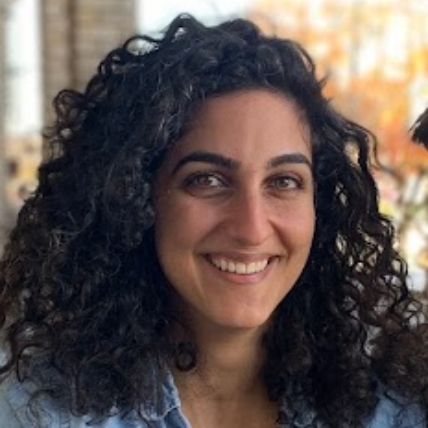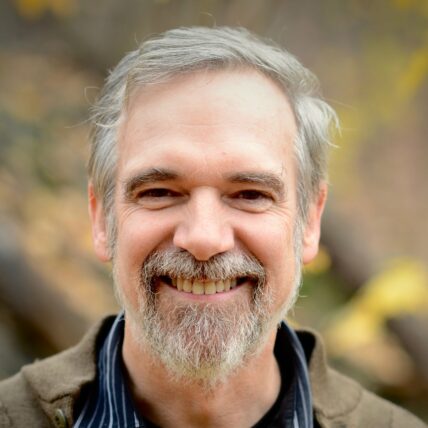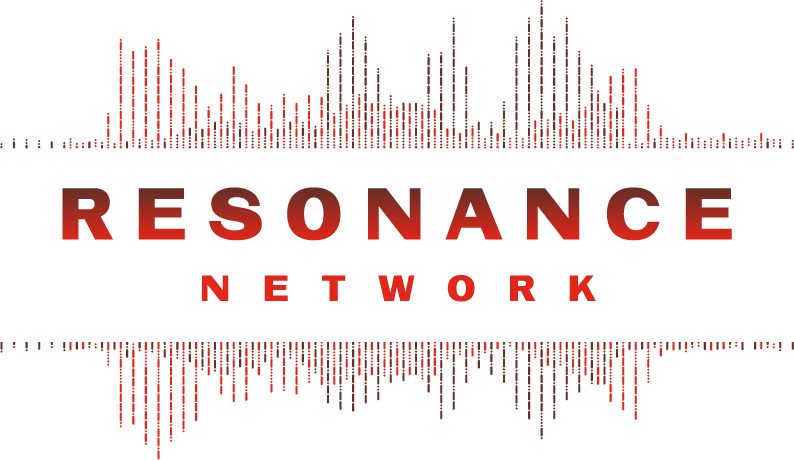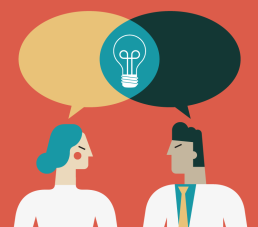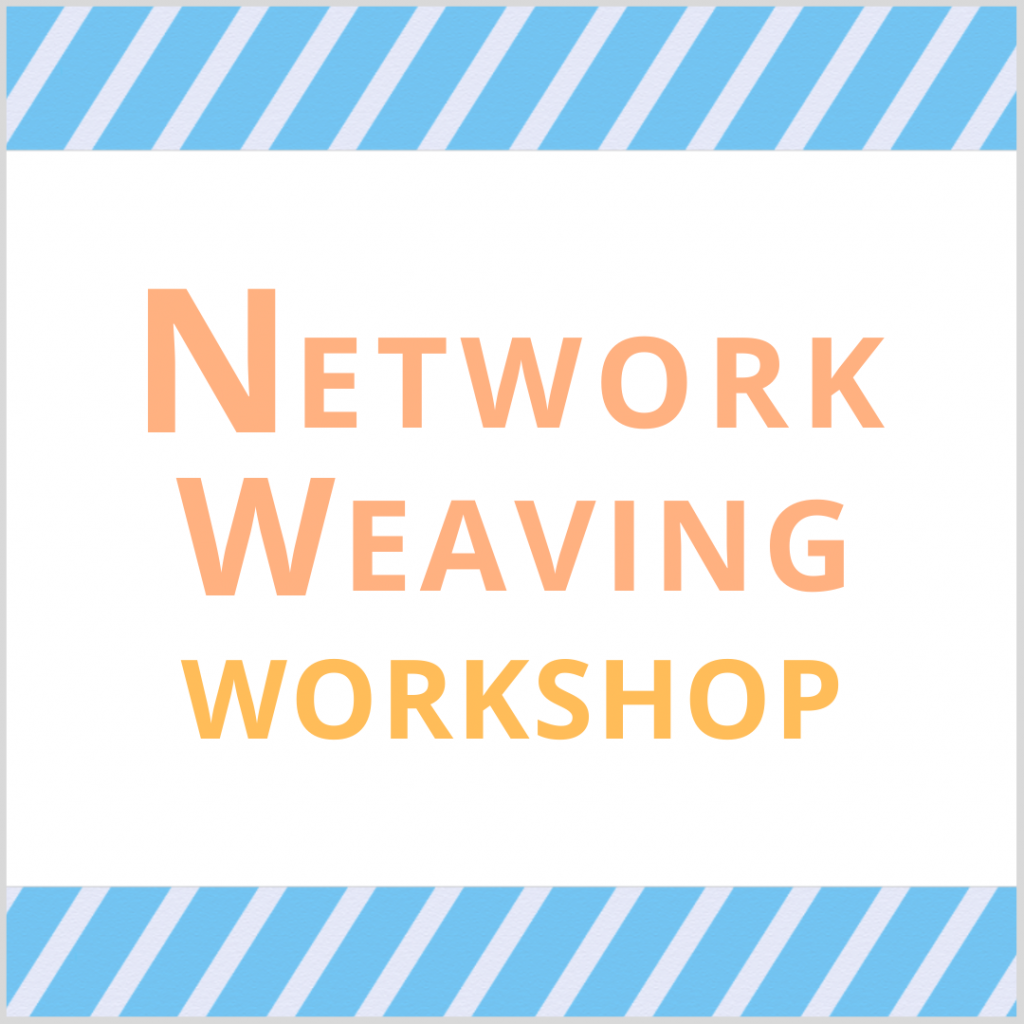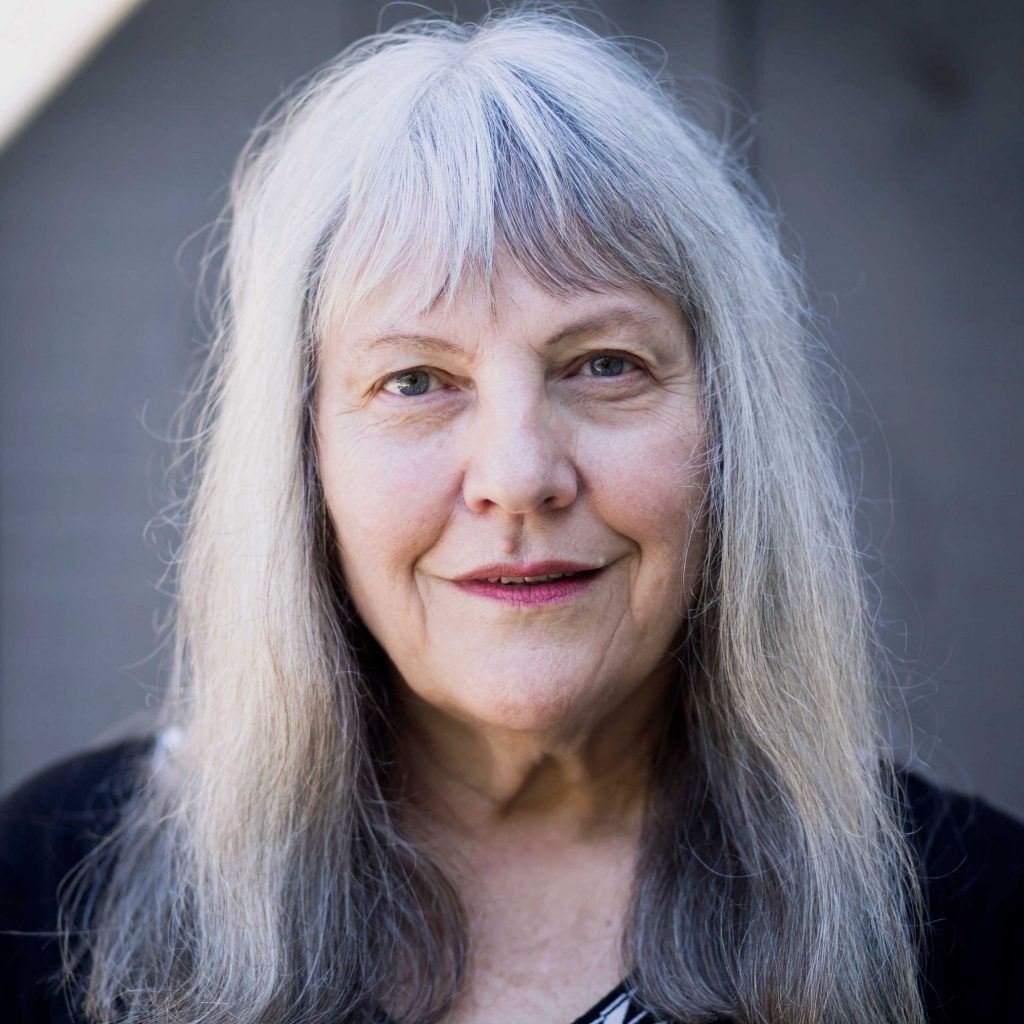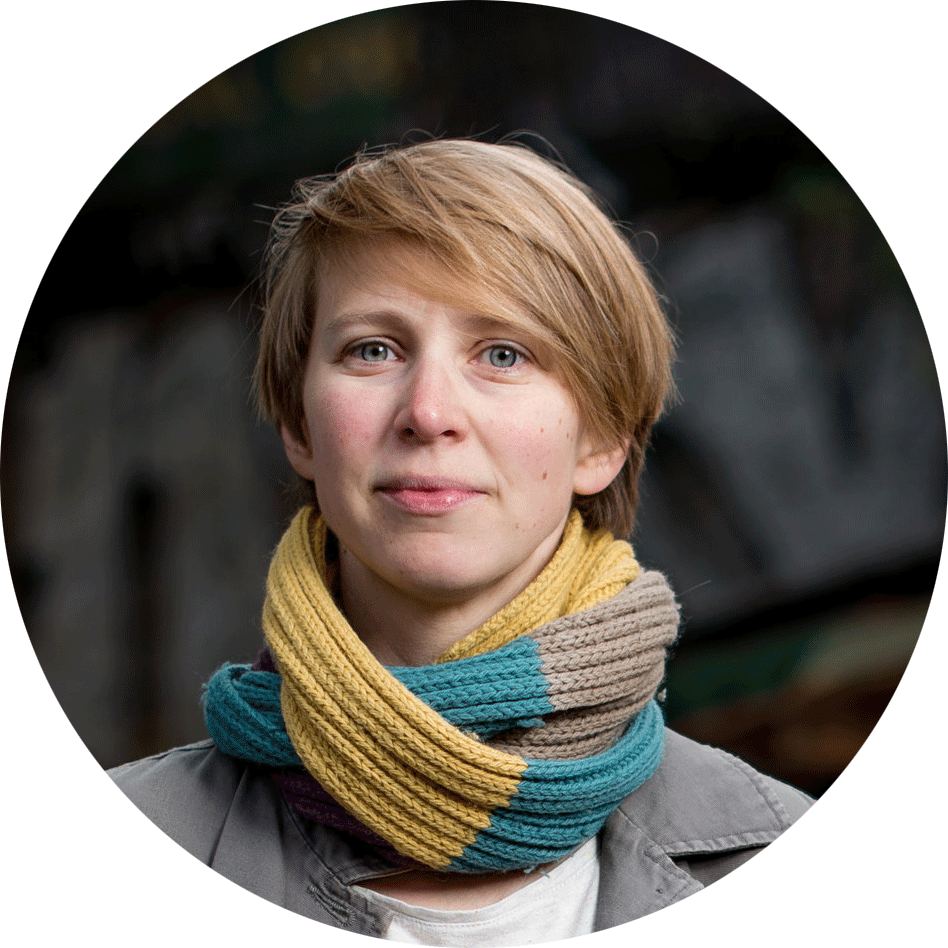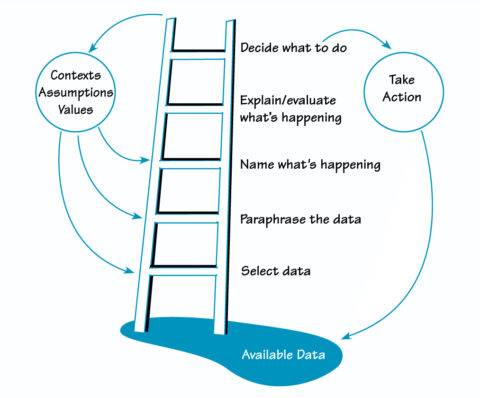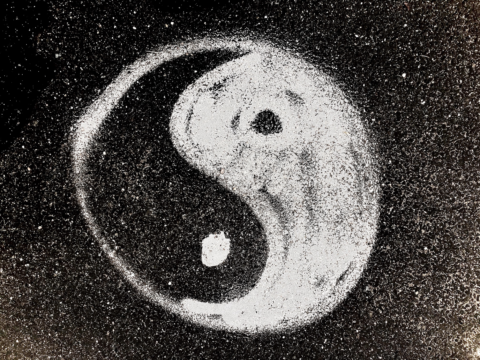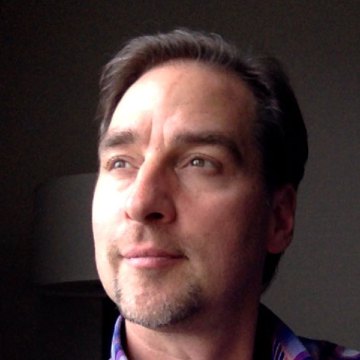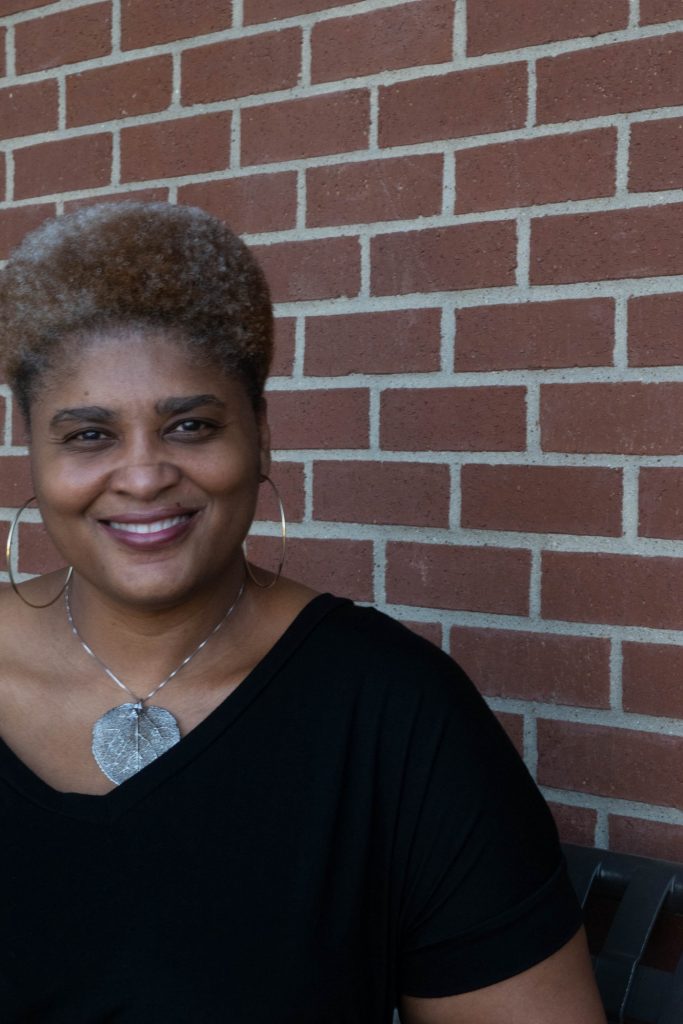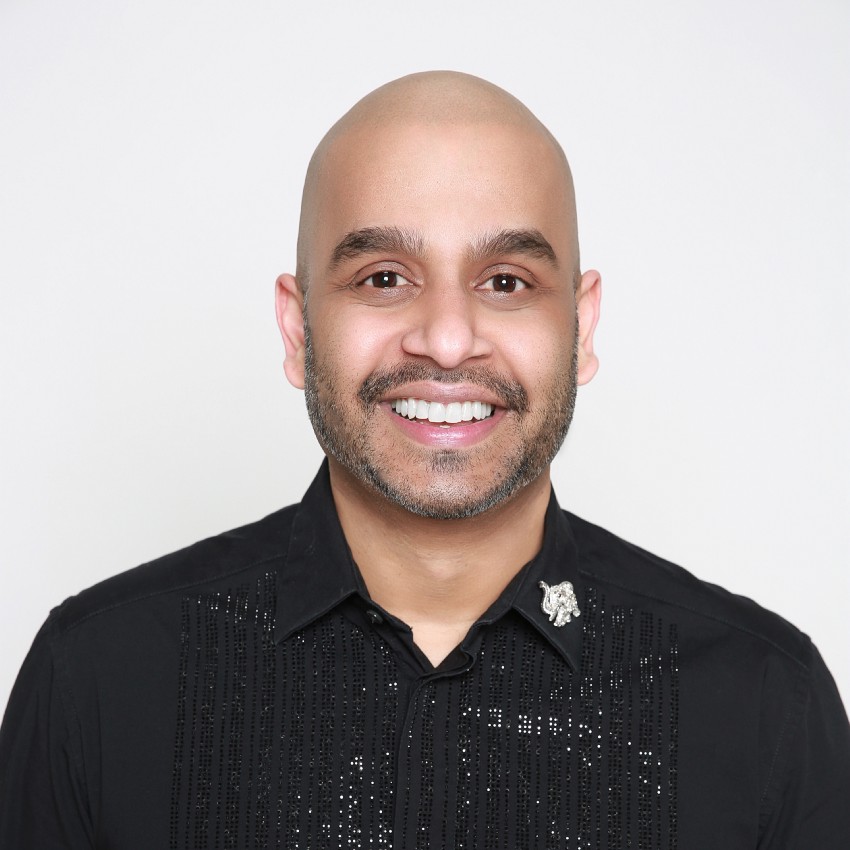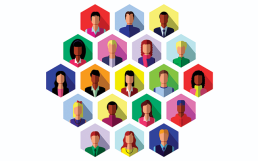Experimenting Towards Liberated Governance
Over a year ago, Vu Le published an article about the current models for nonprofit boards. The title “The default nonprofit board model is archaic and toxic; let’s try some new models” doesn’t bury the lede. Of the current models, Le writes:
“Over the years, we have developed a learned helplessness, thinking that this model is the only one we have. So we put up with it, grumbling to our colleagues and working to mitigate our challenges, for instance figuring out ways to bring good board members on to neutralize bad ones or having more trainings or meetings to increase ‘board engagement.’”
At Change Elemental, we have been experimenting with some new governance models, informed by the work of our clients, partners, and many others in the field who are trying out new structures and ways of governing. For example, Vanessa LeBourdais at DreamRider Productions has shared principles and practices of “evolutionary governance”, and Tracy Kunkler at Circle Forward has supported our learning about consent-based decision making. Countless other groups who have continued to uphold and practice historic, ancestral, Indigenous, and intergenerational structures of governance—and have informed these other values-aligned governance models—have catalyzed our learning.
Here, we offer a specific window on the evolution of our board, including some practices we’ve dreamed up, borrowed, and re-remembered to align governance with our values in a nonprofit system set up to default to white supremacy, paternalism, power over, and other oppressive habits.
The following questions have formed the basis of our governance and leadership evolution (we’ve shared more about our leadership evolution in recent blog posts here and here):
- How might we realize deep equity and liberation in leadership and governance?
- How might we evolve leadership and governance structures to share power and work in more networked ways?
- How might we align leadership and governance practices and culture with our values?
Our journey began a few years ago when our board and core staff team began to get curious about what it might look like to think about our board as mycelium. Mycelium are fungal networks that spread across great distances within soil (and sometimes underwater) and process nutrients from the environment to catalyze plant growth, supporting ecosystems to thrive. In our context, we use mycelium to refer to the powerful network of tendrils and roots that connect our board and core team to other people, groups, and organizations, enabling us to turn toxins into nutrients and nourish ourselves through our relationships to ensure collective thriving and care.
Here is what we’ve learned so far in our governance evolution (from the core team perspective—more from our governance team coming soon!):
Shifting language from “board” to “governance team” helped us reframe the governance team’s role.
Early on we shifted from referring to our board as “a board of directors” to a “governance team.” Tracy Kunkler of Circle Forward offered this definition in a small group experiment on governance we facilitated:
“Every culture (in a family, a business, etc.) produces governance — the processes of interaction and decision-making and the systems by which decisions are implemented. Governance is how we set up systems to live our values, and leads to the creation, reinforcement, or reproduction of social norms and institutions. Governance systems give form to the culture’s power relationships. It becomes the rules for who makes the rules and how.”
Shifting language supported us to shift our mindsets about governance. This language guided us towards greater clarity about our own governance team’s role: co-creating systems and practices that can support and catalyze us to live our values. It also deeply shifted how we both hold and reimagine the boundaries between the 12 people on our governance team, our core team (staff), and other partners to be more porous and center collaboration, emergence, and our interconnectedness.
However, because shifting mindsets requires shifting patterns and practice, this switch in language isn’t simple. We have noticed that we sometimes revert to using the term “board” rather than “governance team” when we are talking about potential barriers that the board may present or “traditional” board responsibilities such as fiduciary oversight. This is a work in progress and when we find ourselves reverting to old language, it is a signal that we might be in older practices, patterns, or ways of thinking about our relationship to the governance team and its role that are no longer serving us or our work.
Practicing liberatory governance is having one foot on land and one in the sea.
Getting clearer on our governance team’s role deepened our sense of what it might look like to realize deep equity and liberation in governance. We began to understand what “liberatory governance” could look like for us—a governance team that partners with us to bridge between current reality and the future we’re building by: moving the organization towards greater alignment with our values; and co-creating liberatory systems and ways of working together that can transform the larger oppressive systems we’re operating within. We talk about this internally as “having one foot on land and one on water,” a metaphor Hub member Elissa Sloan Perry shared from Alexis Pauline Gumbs. Gumbs hears best with “one foot in the water, one foot in the sand.”
In our organizational context, the “water foot” attends to things like our vision, uninhibited aspirations, values alignment, and acting today in ways that prefigure the world we want to see. The “foot on land” takes into account the world as it is, such as the requirements and legal constraints of our 501.c.3 tax designation, and current financial realities and access to other resources, where trust-based relationships can sometimes become transactional or even litigious. Our governance model values both “feet” in its awareness and decision-making. When we make decisions, the “water foot” leads with the “land foot” as a valued, supporting, and crucial partner.
Creating multiple, fluid points of connection across the staff and governance team helps build the relationships and trust necessary for shared leadership and power.
Building trust and mutual accountability are at the heart of our evolving governance structures and practices, just as we have found it to be in building toward shared power and leadership at the staff level. This work is more time-consuming than conventional governance models so we needed to build our collective capacity for sensing what is actually too much time. We also needed to strengthen our skill and capacity for generative conflict including discerning when to: enter into conflict and tension; sit with it so that we can reflect and discuss later; and/or intentionally let it go. This has meant getting more comfortable with sitting in discomfort when conflict can’t (or shouldn’t) be resolved immediately.
Some simple structures and systems support us in developing these capacities and discerning what is needed to build trust and move through conflict. For example, we wanted more interaction between our core team (staff) and the governance team, but didn’t want to necessarily add more large group meetings—we wanted connections to be deep and purposeful. To create purposeful connections, where a broad range of staff and governance team members could develop relationships and bring their unique gifts, we opted to have governance team co-chairs work with a staff liaison. The staff liaison partners with different staff, bringing different people into conversations with the co-chairs and other governance team members where their experience, wisdom, and gifts are critical. The co-chairs and other governance team members then connect together and separately into different areas of work based on their interests, skills, and what is needed.
We also evolved our governance team meeting structure to have staff members join for key sections of the meeting. We share the agenda in advance and offer some guidance to help staff decide when they might join or when they might opt out of a meeting. Additionally, staff and governance team members now caucus separately at the end of each governance team meeting to debrief and raise unresolved issues with the intention of sharing back what needs the full group’s attention. The caucuses support greater truth-telling across the governance team and core team, deepen our understanding of each other’s perspectives and help us dig into conflict with love and rigor.
Grounding in shared values is critical for practicing liberatory governance.
If you were to review the specifics of our governance team’s role, you might not find anything surprising or “new.” The difference is in how the governance team carries out these responsibilities – with a rooting in shared values with staff and commitment to working through differences in values when they show up.
In recruiting and engaging governance team members, we haven’t just sought out individuals who conceptually agree with our values (which were reflected in our recruitment criteria), but people who are game to experiment on what it looks like to make decisions rooted in those values. People who already embrace and practice inner work, multiple ways of knowing, experimentation, and emergent strategy—and who are looking to upend traditional governance team models and create and remember anew.
Even with the perfect container, structure, and systems, it’s the people who make up our core team (our staff) and governance team – their own values as well as their willingness to be in the generative tension that helps support shared values – who have accelerated our work in shared power and leadership both on the core and governance teams. Together, we are living into our vision and deepening our practices of shared leadership and shared power to shift conditions towards love, dignity, and justice.
Look out for more learning from these experiments in liberatory governance in the new year!
Natalie Bamdad (she/her/hers), joined Change Elemental in 2017. She is a queer and first-gen Arab-Iranian Jew, whose people are from Basra and Tehran. She is a DC-based facilitator and rabble-rouser working to strengthen leadership, organizations, and movement networks working towards racial equity and liberation of people and planet.
Mark Leach (he/him/his) has over thirty years of experience as a researcher and management consultant. Mark has a particular interest in strategy, leadership development and transition, and issues of equity and inclusion in organizations.
Originally published at Change Elemental
Banner Photo Credit: Kirill Ignatyev | Flickr
The illusion of hopelessness
The war in Ukraine is a symptom of something bigger— and within reach
In times of war, we are led to believe we are powerless.
We are told that violence is inevitable, an unfortunate part of the way things are. And that the way things are cannot change.
As world events have transpired over the last two weeks, this illusion has begun to splinter
* * *
Russian military forces invaded a sovereign nation on February 24th. Within days, the United States, the European Union, and other nations announced a series of economic sanctions on Russia. At the same time, countries of the European Union waived visa rules for Ukrainian refugees–allowing those fleeing war to enter the EU without having to seek asylum.
Homes across Europe have opened their doors to Ukrainians fleeing war, and President Biden announced that Ukrainian refugees would be welcome in the US “with open arms.”
These moves were swift and unprecedented. Rules that had long existed were replaced with new ones. Systems changed as people and countries moved together in response to a humanitarian crisis.
How quickly rules can change when we want them to.
How malleable systems can be when we agree on what is right.
* * *
Russia’s attack on Ukraine, like all wars, is a symptom of a worldview of domination and extraction.
Like all wars, it exists amid other symptoms and consequences of this worldview: modern dependence on oil and the interests of the fossil fuel industry; unmistakable racism at the Ukrainian border as Africans were systematically turned away.
And the global coordination to condemn Russia’s attack and support the Ukrainian people was made possible, in part, by white supremacy: Western sensibilities were stirred by seeing white refugees. Meanwhile, escalating humanitarian crises in Afghanistan, Palestine, Yemen, Syria, Somalia, and Ethiopia have not been met with the same swiftness.
Imagine a world where all people in need were met with dignity and humanity. Where violence and harm was met with resounding care.
Imagine systems of governance that hold these values above all others.
* * *
In times of war, we are led to believe we are powerless by those who benefit from our silence. We are led to believe our collective systems cannot change by those who benefit from the way things are. Meanwhile, worldviews of domination and extraction continue to shape our reality and perpetuate harm.
As the war in Ukraine has unfolded, we’ve also seen a wave of dehumanizing legislation against queer and trans young people, increasing threats to reproductive justice, and an alarming epidemic of homelessness continuing in the US, all while COVID cases spike in Europe and Asia.
When we understand that all violence is a symptom with the same cause, we can also see that we are not just spectators to what is happening — in Ukraine or right beside us.
There is hope, and the hope is us.
* * *
“There is never time in the future in which we will work out our salvation.
The challenge is in the moment; the time is always now.”
~James Baldwin
Resonance Network is a national network of people building a world beyond violence.
Originally published 3.16.22 at Reverb
Seeing the World Through a Network Lens
June Holley offers Network Weaving Workshop, another training slide deck for use in your organization or network. It provides an introduction to many network concepts and includes a number of activities such as speed networking, mapping your network, and the Network Weaver Checklist.
This slide deck is particularly good for sets of organizations who are not well connected. As result of this session, they would be starting to see the world through a network lens.
The slides are offered in pdf format, but we are also sharing a link to the google slides. Create a copy of the presentation and save it as a new name in your google drive. This way, you can modify them to adapt the presentation to the particular group you are working with.
Access the Network Weaving Workshop slide deck HERE.
June Holley has been weaving networks, helping others weave networks and writing about networks for over 40 years. She is currently increasing her capacity to capture learning and innovations from the field and sharing what she discovers through blog posts, occasional virtual sessions and a forthcoming book.
featured image found HERE
Governance – the overlooked route to transformation: How can we best organise for change?
What are the current governance approaches and ways of organising that are being used in attempts to create systems change? What would more systemic governance approaches for our work look/feel like and how might we transition to these?
Part one in a series of four exploring the future of how we govern and organise. Co-written by Sean Andrew, Louise Armstrong and Anna Birney
“Every attempt to write a new human story converges upon just one mundane, heartbreaking problem: How shall we come together, work together, create together? How shall we organise?”
Nilsson, Paddock and Temmink, 2021, Changing the way we change the world (Draft manuscript)
At the heart of change is how we think, relate and act. While these ways of being weave in and throughout our ordinary everyday experiences, they are not always given the intention and continuous attention they need. We believe how we relate, work together, and organise are cornerstones of change making. How we find ways to bring awareness to these elements really matters, and is easier said than done. They need just as much attention as the structural shifts that are required in the coming decade.
With this in mind, we are exploring governance as the place of untapped potential that can enable transformation today and into the future.
We’re defining governance as: The forms, structures and social processes that people and institutions use to create and shape their collective activities.
As such, we, and many others we’re working with and are inspired by (Beyond the Rules, The Hum, Reinventing Organizations, Going Horizontal, Practical Governance, Organization Unbound, Lankelly Chase, Shared Assets, Patterns for Change, Leadermorphosis and Barefoot Guide Connection, to name a few) are calling for governance approaches that reflect systemic principles that are suited for complex adaptive systems. Many of those we’ve listed are experimenting with elements of this, each adapting these to their contexts like Transition Movement and their shared governance approach, or CIVIC SQUARE, who are applying their mission and values into the organisational structures and processes – from how they do recruitment through to how they do financial planning.
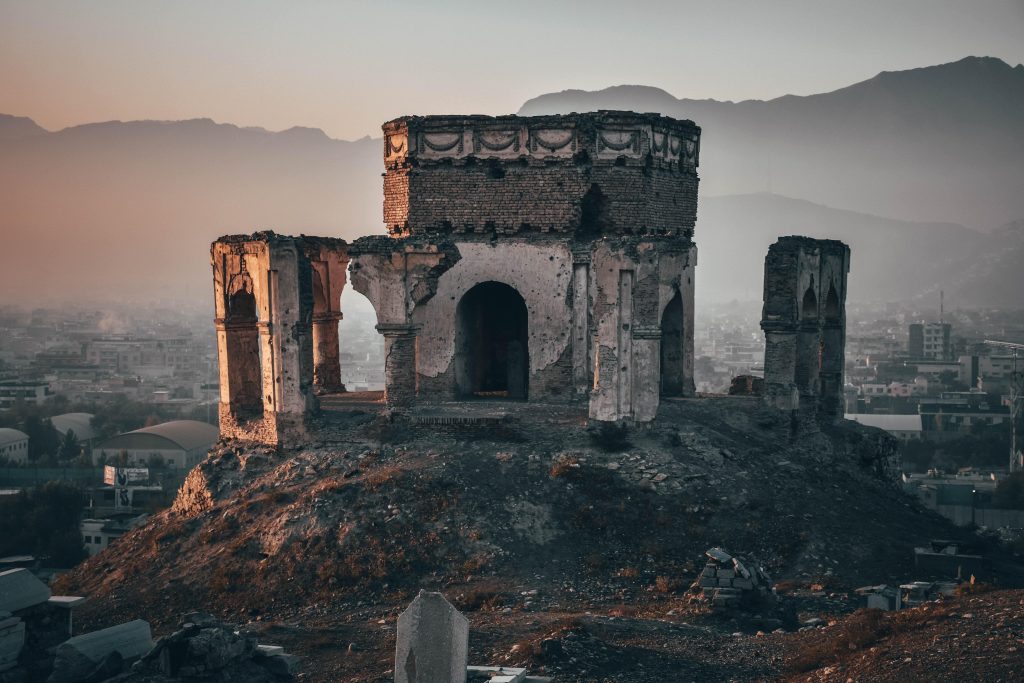
We’re increasingly noticing internally, through our own organisational experience at Forum for the Future, and through our systems change strategy, collaboration and coaching work with others, that many of us subscribe to dominant forms of governance that are designed for a complicated, not complex world. We’ve noticed that sometimes, without intention, our own patterns of organising and those of many of our partners are perpetuating the structures, dynamics and patterns we are trying to shift. For example, we take centralised or hierarchical decision making approaches even though we want to enable greater ownership over a project which can come through taking advice-based decision making approaches where those closest to the challenge are part of the process.
Systemic governance on the other hand enables self-organisation (how a group of people organises their time, attention and resources in ways that meet the urgent necessity of the moment). It cultivates the emergent practices (and enables new system patterns) that help us align to regenerative and distributive approaches that better mimic our living systems.
Our inquiry into governance
After exploring new forms of organising, over the last 18 months at Forum we have been exploring two governance inquiry questions:
- What are the current governance approaches and ways of organising that are being used in attempts to create systems change?
- What would more systemic governance approaches for our work look/feel like and how might we transition to these?
To respond to these questions, we’ve been reflecting on our own organisational life while also learning from current and past collaborations we’ve convened or participated in over the past decade.
What is governance?
So how do people understand governance in their context? Through our inquiry we found that peoples’ understanding and expression of governance varied and was even sometimes quite vague. While governance meant different things to people, depending on their role or context, the people we spoke to talked about it in a few distinct ways, the ‘elements of governance’.
Elements of systemic governance
Systemic governance has both soft and hard elements.
Part of the reason why we tend to think of governance as a fixed process is that we often associate it with a few rigid components. From this exploration we realised that governance is in fact made up of a whole spectrum of elements, which while distinct, together create a unique governance context you may find yourself within, be that in an organisation, a movement, a collaborative endeavour, a community or really any place where people come together to organise something. By naming a spectrum of elements it expands the view of what governance is and how these parts form a tapestry.
We’ve created the figure 8 (below) as a summary of what we’ve heard, recognising that one way of distinguishing these elements is looking at the ‘hard’ or ‘soft’ elements. While the hard and soft elements can sometimes feel in tension with each other – they are in fact interdependent and together they form part of the governance landscape we have to traverse together;

In reality – we recognise these elements can be interchangeably hard/soft and are in symbiosis. Some will be visible and explicit and others invisible and implicit, depending on the context and people’s experience. For example, a “hard” element such as finance might actually be very hidden in an organisation without financial transparency or a “soft” element such as communication and transparency might be experienced overtly as lacking and be a visible gap in ways of working.
Innovating the hard and visible elements of governance
Most of the governance approaches we explored focused on the hard and often more visible, explicit structural elements of the organisation. These seemingly felt easier to figure out with clear problem > solution tactics. For these hard, visible structural elements of governance, people talked about inherited “best practices” that often took the form of compliance protocols. When working systemically, challenges can come when the ‘hard’ or ‘visible’ parts of governance are too rigid and fixed. We found that people working on complex challenges were often bound by these constraints and were yearning for ways to disrupt, reimagine, and innovate these ‘hard’ elements.
One hypothesis we are working with is that the hard stuff (the what) can be a transitory tool and a trojan horse for prioritising the soft stuff (the how).
The soft, invisible elements are the hardest part of governance to shift
The “soft” elements of governance are the implicit less formal cultural components of how people relate and organise. It’s often less tangible and thus harder to shift. Systemic governance is a constant practice of probing, sensing and responding to the dynamic nature of these elements in changing contexts. We found that these elements are too often submerged and therefore if we want to develop resilient adaptable governance approaches we need to bring to the surface and made explicit the soft cultural elements. While these elements are often deprioritised as they are unseen, they are still aspects of governance that materially impact the lived experience of people working within different organising forms.
Why is it so hard to work with the softer issues? The nature and quality of our relationships is the foundation of any governance. Questioning, challenging and reconfiguring established relationships is hard. It can take difficult conversations and processes to bring in different perspectives and overcome unhealthy power dynamics. Bringing self-awareness, paying attention to relational dynamics, creating space to listen and honestly share and transparent communications are the starting points.
Reframing governance as a journey
We heard people thinking about governance as putting structures and processes in place and thinking the rest will follow. Any of the words and connotations people mentioned pointed to governance as something that is fixed and hard, a static thing you set up on a one-off basis when in fact governance approaches are alive, can be enabling and need to be seen as a constantly evolving journey. We’ll explore some more of these governance myths in the next blog piece.
Sign up for the newsletter to get the next blog piece directly to your inbox.
Governance as an overlooked intervention or leverage point for change
These elements of governance play out in all of the many ways when we come together – be that in a multi stakeholder collaboration, across teams or functions in a large organisations, in communities, within networks or distributed movements. Governance is central to any form of organising or organisation creating change. We need to support others to imagine and implement new governance approaches that demonstrate and model how we can operate systemically, as a fractal of the change we are cultivating in the world.
What next?
We offer this figure 8 framework as a way to open up a different conversation about governance and acknowledge it is just one framing. We’d love to know if this resonates with your experience and how the challenges of hard and soft elements play out for you?
We’ll be writing two more pieces in this series. One to explore some of the governance myths we’ve been uncovering through our inquiry (e.g. governance helps us control things). And a second to dig deeper into some of the core systemic governance elements you might start to pay attention to now as critical yeast to influence your organisational practices and experience.
In 2021, we’re starting to explore some of these ideas with fellow travellers who have similar experiences in their context. If these ideas resonate with you or you want explore them more – get in touch with Sean s.andrew@forumforthefuture.org or Louise l.armstrong@forumforthefuture.org
Background context
At Forum for the Future, our governance inquiry is one of our three live inquiries (power, governance, regenerative) we’ve been exploring over the last 18months. This inquiry approach supports our aspiration to be a learning organisation that keeps questioning the assumptions nested in our purpose and supporting structures, processes and practices. Our belief is that these inquiries are helping us continuously become a system-changing organisation that is using our own experience as a site of learning, and as an expression of the change work we’re trying to do in the world. This inquiry has been greatly inspired and supported by those in the field who have been, and are, experimenting with ideas and approaches to governance. This piece is part of our ongoing Future of Sustainability series. In 2021 we’re exploring the narratives and practical interventions needed for transformation in the coming decade.
Read next:
- Exploring transformational governance together Governance can be transformational. When we set our sights on changing the world, we also know that governing well goes beyond preparing our own organisation, network or movement for the future. How do move beyond tweaking the way things currently work and apply governance to transform the ‘systems’ that operate in our society that maintain injustice, oppression and inequality (such as race, patriarchy and class)? (PART 2/4)
- Reimagining governance myths Part three in a series of four exploring the future of how we govern and organise. This piece looks at how people think governance happens today and challenge five commonly held governance myths. (PART 3/4)
- The governance flywheel In this final installment of our series on governance, we introduce the “governance flywheel”1 which highlights three fundamental linked areas that if they are deliberately seeded and nurtured, individually and together, can create the momentum needed to cultivate and grow healthy governance systems. (PART 4/4)
Originally published at Forum for the Future
An enabling, empathetic and courageous leader. I questions and challenges the way things are done, models what is possible and enable others to do that too. Sees potential and nurtures it in people and ideas. Living change while knowing how to strike how to strike the balance between adventure, rest, work and care and nurturing.
For another way of thinking about governance alternatives see Resonance Network's post and media toolkit : THIS IS HOW #WEGOVERN
Energy Network Literacy: On Care-full Dis-Connection, Dis-Entanglement and Regenerative Flow Management
“i think of movements as intentional worlds, or perhaps more accurately as worlds designed by and for intentional people, those who are able to feel the world not as an unfolding accident of random occurrences, but rather as a massive weaving of intention. you can be tossed about, you can follow someone else’s pattern, or you can intentionally begin to weave and shape existence. and yes, the makeup of your web is the same matter as all that already exists, but your direction and pattern can be new, unexpected, agitating new growth. what results from your efforts depends on your intention.”
– adrienne maree brown
I recently returned from a week-long vacation with family to the so-called Northeast Kingdom of Vermont, and a particular location that is deeply nourishing and meaningful for its landscape, its link to family history on my wife’s side and (perhaps for these times) an unusual sense of community. I count myself privileged to have had the time and the opportunity to be in that place with those loving people, with that sense of multi-generational connection.
Heading back “home,” I could feel the tension mounting as my wife and I talked about re-entry. Before thought, my body tightened in anticipation of the return to the mundane daily tasks, to-do lists and un-answered emails/phone messages. The morning after our return, I somewhat absent-mindedly dipped toes into social media and felt my blood pressure rise. “What am I doing?” I wondered, even as I continued to wade in, pulled by questions about what happened while we were away and what new opportunities might be presenting themselves – FOMO (“fear of missing out”) in full effect. When I closed the laptop, perhaps 30 minutes later, I was aware of my stiff neck, shallow breathing, hunched shoulders, and whirling brain. Saved by a 12 year old daughter almost yelling, “Dad, c’mon, let’s get outside and play ball!”
As much of a proponent as I am of collaboration and networks, I am struck by how I can get a bit caught in the approach/avoid loop of connection, and mired in questions of “How to connect?” and “How much is enough connection?” and “What kinds of connection do I really need?” As I engage with others, I realize that these are pretty fundamental ponderings for navigating a more viscerally entangled world.
“When our ancestors spoke about a web of life, they were describing what Western science calls quantum entanglement. They understood that we all originated from the same seed of life, and when that seed exploded and carried life across our universe, we remained connected. Quantum entanglement tells us that any matter once connected physically can never be disconnected energetically (or spiritually).”
– Sherri Mitchell (Weh’na Ha’mu’ Kwasset, “She Who Brings Light)

More and more is being written, spoken and (re)-presented about the fundamentally interconnected nature of our lives, and of Life writ large. In a beautiful essay in Emergence Magazine (“When You Meet the Monster, Anoint Its Feet”) , which weaves connections between climate change, race, racism, evolutionary biology, ecology, myth and narrative, Bayo Akomolafe offers …
“Perhaps most important about this time is that the image of the human is being composted—or, we are experiencing great difficulty determining where the nonhuman stops and the human begins. Everything touches everything else in the Anthropocene—an observation that is supported by, say, current thinking about ‘holobionts,’ assemblages of bodies within bodies within bodies, or intersecting communities that toss out notions of separable individuality. We are holobionts. We live and are lived through; we are composite beings, companion species, emerging within and among assemblages.”
And, as Akomolafe later shares from his indigenous and experiential knowledge, bodies and beings transcend time. More recent research into intergenerational trauma (see the work of Resmaa Menakam and Thomas Hubl) shows that our bodies indeed know the score, not only of our own individual pain, but the suffering passed through our ancestral lines. Husband and wife, and astrophysicist and physician, team Karel and Iris Schriyver, in their book “Living With the Stars,” add that our bodies are always in dynamic exchange with … the wider universe! Our cells die and are replaced by new ones, renewing our entire biological makeup, using food and water as both fuel and construction material. This rebuilding happens by using elements captured in our surroundings and cycled through geological processes, all extensions of galactic explosions and ripples and atoms that formed through collisions with our planet’s atmosphere eons ago.
We are entangled in a multiplicity of ways, containing and residing within multi-dimensional multi-scalar multitudes. I find this simultaneously liberating, dizzying, humbling and dumbfounding. Knowing that everything is interconnected can inspire a profound sense of belonging and ease, yes, and sometimes it can make it a bit hard for me to plan or get through the day!
And so here we are, exquisitely entwined, and yet also individuals, or at least bounded organisms with a sense of individuality, of distinction, of the need to preserve the integrity and dignity of something called “me” or “self.” And the question of these times would appear to be how we can honor a healthy sense of self/individual, whole communities, and Life, all at once.
“To allow oneself to be carried away by a multitude of conflicting concerns, to surrender to too many demands, to commit oneself to too many projects, to want to help everyone in everything, is to succumb to violence. The frenzy of our activity neutralizes our work for peace. It destroys our own inner capacity for peace. It destroys the fruitfulness of our own work, because it kills the root of inner wisdom which makes work fruitful.”
– Thomas Merton

While there have been understandable and important pushes to get beyond the individualistic and atomistic view, I have the feeling that some of this emphasis, as with all pendulum swings, can go a bit too far. Seeing the world as profoundly interconnected might drive a strong desire to reclaim a kind of forgotten birthright, and in my experience, it can also result in getting lost, especially if it is guided by an underlying desire to fully understand, grasp and/or control it all (colonial mindset?). Or if that drive is purely to belong to something, anything, no matter its underlying values, to spare the pain of felt/perceived separation.
A certain view in contemporary physics holds that the world, the universe, is entirely made up of an infinite amount of information, a vast expanse of sensory inputs that all taken together would be utterly overwhelming to our individual apparatus. And so we have our human senses as filters to sift through, make sense and identify/assemble what is most … useful, interesting, advantageous. The point is, there is always more than meets (or at least is taken in by) our eyes, ears, nose, tastebuds, touch, etc. This calls to mind the ladder of inference, a framework we teach at IISC that helps people remember that we are often recycling conclusions we have drawn from a very partial understanding of reality, and that it might behoove us to expand our “view” to reach more helpful (just, prosocial, sustainable) conclusions and actions.
That said, simply taking in more, or making more connections, may not lead to a better place, if it results in overwhelming nervous systems. So it seems there is a balancing act here. Just as we often can’t do something new without letting go of something old, there is a need to modulate what one takes in – news, ideas, people, and possibilities. Connection and flow management. Energetic discernment. Intentional dis-connection and dis-entanglement.
What might this look like in this networks upon networks networked world? A few thoughts …
“Between you and me, now there is a line. No other line feels more certain than that one. Sometimes it seems not a line but a canyon, a yawning empty space, across which I cannot reach.
“Yet you keep reappearing in my awareness. Even when you are far away, something of you surfaces constantly in my wandering thoughts. When you are nearby, I feel your presence, I sense your mood. Even when I try not to. Especially when I try not to. . . .”
– Donella Meadows
In a previous post, I shared some of the wisdom of network science as taught by Danielle Varda and colleagues at Visible Networks Lab. They make the point that when it comes to creating strong (resilient and regenerative) networks, more can be less in terms of the connections a person has. Connectivity and related flows can be ruled by a relentless growth imperative(capitalism?)that is not strategic or sustainable. More connections require more energy to manage, meaning there may ultimately be fewer substantive ties if one is spread too thin. Instead, the invitation is to think about how to mindfully maintain a certain number of manageable and enriching strong and weak ties, and think in terms of “structural holes.” For more on this social network science view, visit this VNL blog post “We want to let you in on a network science secret – better networking is less networking.”
Over the last several years, I have been playing with a set of about a dozen principles (give or take) for network thinking and action. One that seems quite helpful here is the saying, “Do what you do best and connect to the rest.” As ecosystems become more robust and complex, individual participants are invited to carve out more specific niches, and be oriented towards synergistic and supportive relationships with others. In other words – stop trying to do it all, or connect to it all! It’s not possible, it can create unnecessary competition, overwhelm and inhibit “collaborative efficiencies.” This also aligns with a metric of energy network and systems science (see below), which focuses on the importance of a diversity of roles in healthy living systems. Share and spread the wealth!
As just alluded to, the emerging field of “energy systems science” points to a number of different factors or indicators that contribute to long-term living system (including human systems) health and thriving. Four of these indicators fall under the heading of “measures of flow.” Thinking about how these apply to our own and/or collective in-take and sharing of information/energy might be helpful for knowing what is “sufficient:”
- Robust cross-scale circulation: How rapidly (too fast?/too slow?) and well do a variety of resources reach all parts of an individual/social body?
- Regenerative return flows: To what extent does the individual/social body recycle resources into building and maintaining its internal capacities? Is there too little (depletion)? Is there excess (hoarding)?
- Reliable inputs: How much risk and uncertainty is there for critical (health promoting) resources upon which the individual/social body depends?
- Healthy outflows: What impacts do the individual/social body’s outflows have externally?
On a more personal tip, I have been married for almost 20 years. What has perhaps been one marriage from the outsider’s perspective has been many from the inside, as other long-standing intimate partners can surely appreciate. We have learned and grown over the years. One important lesson has been knowing when we are too enmeshed and need to separate for some time. There is a point of diminishing returns in many of our heated discussions/ arguments, and if we do not dis-entangle or dis-connect, we have learned, we can do damage to the relationship.
Along the same lines, two of our daughters are identical twins, now twelve-years old. What we have observed about them is what we have heard about many twins – they are truly uniquely connected. There are many times when we quietly watch with fascination as they, seated on opposite ends of the room, engage in similar gestures (scratching their heads with the same hand at the same time, for example) seemingly without direct awareness. Quantum entanglement in full effect! And they can get themselves enmeshed at times and in ways that drive each of them, and the entire family system, to the edge. They are learning that they need and how to differentiate and take space, even as they have a natural gravitational pull to their other half.
Knowing when to create a bit of a boundary (what Buckminster Fuller once called, “a useful bit of fiction”), a separate amniotic sack if you will, and when it is optimal to connect more fully often requires attention and discernment, for all kinds of relationships.
“Beware of the stories you read or tell; subtly, at night, beneath the waters of consciousness, they are altering your world.”
– Ben Okri
The movie The Social Dilemma and the work of Douglas Ruskhoff (see Team Human) both point to the perils of getting caught up in our increasingly socially mediatized world. The algorithms behind these powerful tools are designed to capture our attention, pressing our buttons oriented towards hedonism (“likes”) and fear/outrage. A recent article in The Atlantic Monthly (“You Really Need to Quit Twitter”) points to how difficult it can be to break this habit. This is not to say that these tools are inherently bad or evil. They are certainly formidable, and require considerable attention and intention. Social media fasts and limited dips can help, as well as being mindful about what and why we are both sharing and consuming (see this other recent post for some considerations on this – The Wisdom of W.A.I.T.ing: Mindful Sharing in a Network Age.
If dis-engagement is not an option or ideal, there are a number of practices I have been learning and using that can help to manage energy exchanges, both in-person and virtual:
- From the Rockwood Leadership Program, I learned the practice of imagining that my body is like meshwork (think a fishing net), when something intense is coming at me, so that it can pass through me, and I don’t use too much energy resisting or having it get stuck in my body/psyche.
- From a couple of local trauma therapist who focuses on racialized trauma, I have learned the practice of using imaginative “shields” (in my mind’s eye) on the outside and inside of my body, to allow for energy coming in or going out. Silver shields on the exterior repel unwanted energy, and on the inside they keep precious energy in. Grey shields allow some energy in or out.
- From a number of practitioners, I have learned the practice of slowing my breath to manage energy flow, in-take and circulation.
- From Qigong Master Robert Peng I have learned how to use a “circuit breaker” for the life force (or “chi”) moving through me by enclosing my thumbs with the fingers on each hand, which can diminish intense energy flows when engaged with others.
- From The Weston Network/Respectful Confrontation community, I have learned the practice of being aware of my own personal space, surrounding my body, and respecting that boundary when engaged with others.
- Also from The Weston Network, I have learned about the practice of embodied energetic balance when reaching out to make contact with others, while not over-extending, and also maintaining a firm sense of grounding and dynamic flexibility. I have also been reminded, helpfully, that balance is never static. We are constantly in motion, if we are alive, and when “most balanced,” are actually able to recover quickly from being extended or engaged in some way. So a question to carry is “What supports my ongoing ability to recover?”
- From Harold Jarche, I have learned many ways of managing personal knowledge development through mindful connection to different networks in ways that ideally make them all “smarter” and don’t simply ask them/me/us to work “harder.” Of particular help is knowing what one can reasonably expect in terms of energetic flow and return from work teams versus communities of practice versus one’s wider social networks (see image above).
- Especially in work that may be emotionally challenging and draining, I have learned from both Acceptance and Commitment Therapy/Training, as well as teacher Tara Brach, the idea of “tending and befriending” otherwise unwelcome feelings that inevitably come up, so that rigid resistance does not make those emotional visitors stronger.
- And in general, I am embracing and making space for more silence, solitude and stillness, challenging some of my deep seated anxieties about losing connection and a sense of belonging in the world (what some would say FOMO is really about – for more about this, see this informative talk by Tara Brach).
And there are SO MANY teachers out there and much wisdom to glean that I certainly welcome others to share! It is my hope that many more of us can become adept energy and flow scientists/artists/healers/workers as we intentionally weave patterns that are the basis of the better world we sense is possible and know is necessary.
“The point of solitude is to give yourself time to grow in your own way, while the ultimate goal remains the difficult task of love and connection.”
– Damion Searls (from the introduction to a new translation of Rainer Maria Rilke’s Letters to a Young Poet)
oringially published at Interaction Institute for Social Change
Curtis Ogden is a Senior Associate at the Interaction Institute for Social Change (IISC). Much of his work entails consulting with multi-stakeholder networks to strengthen and transform food, education, public health, and economic systems at local, state, regional, and national levels. He has worked with networks to launch and evolve through various stages of development.
Rising Through Resilience: Dr Froswa’ Booker-Drew On The Five Things You Can Do To Become More Resilient
Watch your thinking. One of my favorite quotes is “Watch your thoughts, for they become words. Watch your words, for they become actions. Watch your actions, for they become habits.” Everything starts as a thought. Pay attention to what you think about yourself and the situations you face. It can determine your results/outcome.
Resilience has been described as the ability to withstand adversity and bounce back from difficult life events. Times are not easy now. How do we develop greater resilience to withstand the challenges that keep being thrown at us? In this interview series, we are talking to mental health experts, authors, resilience experts, coaches, and business leaders who can talk about how we can develop greater resilience to improve our lives.
As a part of this series, I had the pleasure of interviewing Dr. Froswa’ Booker-Drew.
Froswa’ Booker-Drew, Ph.D. is a Network Weaver who believes relationships are the key to our personal, professional and organizational growth. She has been quoted in Forbes, Ozy, Bustle, Huffington Post, Modern Luxury, and other media outlets, due to an extensive background in leadership, nonprofit management, philanthropy, partnership development, training, and education. Froswa’ graduated with a PhD from Antioch University in Leadership and Change with a focus on social capital, diverse women, change management, and relational leadership. She is the host of the podcast, The Tapestry and author of 3 workbooks for women, Fly Away, Ready for a Revolution: 30 Days to Jolt Your Life and Rules of Engagement: Making Connections Last.
Thank you so much for joining us! Our readers would love to get to know you a bit better. Can you tell us a bit about your backstory?
Iserve as Vice President of Community Affairs for the State Fair of Texas. I am responsible for our philanthropic giving, community initiatives and partnerships and some of our educational programming. I am also the co-founder of HERitage Giving Circle and Power in Action, two amazing organizations focused on giving in the Black community of North Texas. Lastly, I’m an adjunct professor at Tulane University and a research affiliate at Antioch University. I am also an author of three books and finalizing a fourth.
Can you share with us the most interesting story from your career? Can you tell us what lessons or ‘take aways’ you learned from that?
I remember very young in my career having a boss that I looked up to and wanted to emulate. She was brilliant, well-respected, and gifted. I spent a lot of time with her due to the long hours of the position. Our families even spent time with one another. As I began to thrive in the work and began to receive recognition for the work, she changed. I moved from a brainstorming partner to being micromanaged and criticized for everything. Sadly, her superiors even commented on the unfair treatment I received but they did nothing to address the mistreatment. I finally decided to walk away because the toxicity was overwhelming and while others were afraid of her and chose not to cross her, I left on faith to start my own business. I learned several lessons. Sometimes difficult experiences occur to show you what you are made of, but they also can serve as a catalyst to push you from comfort to creating your destiny.
What do you think makes your company stand out? Can you share a story?
I’m fortunate to work for the biggest and best State Fair in the country! The State Fair of Texas in twenty-four days not only has more than 2 million visitors but the event supports my work to providing funding to nonprofits in the local area (so proud of how we are changing the narrative in philanthropy), our signature programming that includes building the capacity of nonprofits and businesses in our area, and supporting initiatives in our area that impact education, social justice, economic development, or nonprofit growth. I don’t think people are aware of the many things we do outside of the event year-round which is unique for the industry. In addition to my work at the State Fair of Texas, I am an author and I speak at a variety of events. I also provide training and consulting to a limited number of organizations. I think what makes my work unique is the decades combined of education and experience that contributes to my ability to understand organizational culture, community development, philanthropy, and DEI.
None of us are able to achieve success without some help along the way. Is there a particular person who you are grateful towards who helped get you to where you are? Can you share a story?
I am forever grateful to my mother. My mother endured a lot of hardships and loss. She instilled in me the importance of an education but also the importance of pursuing your dreams. She has been my biggest cheerleader and when I forget who I am, she reminds of not just what I’ve accomplished but the endless possibilities that exist within me. It’s a gift to have a mother that you adore but one who is also your friend and confidante.
Ok thank you for all that. Now let’s shift to the main focus of this interview. We would like to explore and flesh out the trait of resilience. How would you define resilience? What do you believe are the characteristics or traits of resilient people?
Resilience is the ability to bounce back after difficult situations. I think resilient people are courageous and determined. I think at times, we practice resiliency without necessarily equating our actions with being resilient. For many of us, we do what we must because the situation requires it. In some circumstances, we have limited choices, and we choose to push through it because the other options are either limited or non-existent.
Courage is often likened to resilience. In your opinion how is courage both similar and different to resilience?
I think it is important to note that although resilience requires the ability to push through situations, sometimes, we are pushing through because our choices don’t allow for anything else. Resilience is important but I don’t think we talk enough about trauma and that many of us are pushing through very difficult situations without acknowledging the scars that we’ve endured to get through. I’ve heard resilience compared to a fork being bent out of shape only to resort to its original state. Yet, depending on the intensity of the bend, is the fork ever back to its normal state? I think the same can be said about many of us — we bounce back but the bend is so deeply now a part of our consciousness. We aren’t the same, we’ve just persevered and moved on. Is it really courageous or a commitment to doing something we must do even when it doesn’t feel good?
When you think of resilience, which person comes to mind? Can you explain why you chose that person?
Simone Biles is a person that epitomizes resilience. Here is a young woman who smiled and performed in the midst of a traumatic experience that was ignored and yet, was expected by the public to continue to put her body through such intensity while she struggled both mentally and physically. She decided to step back and take care of herself despite the unsolicited comments from others who knew nothing about what she went through, and she placed her needs first. I think she exemplifies that for many of us, we continue to bounce back despite the need to stop, slow, down and process our pain instead of always pushing through. That’s resilience as well.
Has there ever been a time that someone told you something was impossible, but you did it anyway? Can you share the story with us?
I remember in high school meeting with my guidance counselor to sign up for Latin. She told me that “you people don’t take Latin”. What could have easily served as discouragement, I laughed and told her that I was one of those people who would take Latin. I took Latin in High School and was a few hours from a minor in it in college. I didn’t allow her racism or thoughts about me to stop me from doing something I knew I could do. I also recognize that everyone doesn’t do this. There are so many obstacles and barriers and after repeated blocks, it’s easy to get frustrated, give up and get discouraged. It has nothing to do with weakness. I think we all have our breaking points and it’s imperative to understand that what works for me may not apply for you. We can all learn from one another, but we must be aware that our experiences, upbringing, and other factors can impact our ability to bounce back.
Did you have a time in your life where you had one of your greatest setbacks, but you bounced back from it stronger than ever? Can you share that story with us?
There have been a lot of setbacks. I remember applying to a college that I really wanted to go to, and I didn’t get in or applying for a job that I wanted, and it didn’t work out. Those situations can be devastating. The college that said no actually did me favor. I ultimately attended the University of Texas at Arlington which opened so many doors for me to build my leadership and relational skills. At the time, I thought the ‘no’ was the end of the world but actually became the beginning of something special that changed my life for the best.
How have you cultivated resilience throughout your life? Did you have any experiences growing up that have contributed to building your resiliency? Can you share a story?
In February 2021, in Texas, we experienced Snowmaggedon. I moved in with a friend after the heat in my home dropped down into the 30s due to a loss of electricity. I recognize that other parts of the country are prepared for this type of weather, but we were not since cold weather doesn’t really last very long and we typically have heat when it does. I was so grateful for my friend’s hospitality and even while I was there, I was terrified of the same thing happening at her home and the possibility of moving again. This was difficult at a time when very few people had vaccines and we were still understanding COVID’s impact. After four days of this experience, we all went back to work the following Monday as if nothing happened. Some would call it resilience. I thought it was insane. Part of resilience is the ability to reflect and lament. I’ve learned that many times that we practice resilience are often a result of traumatic experiences. Moving on is expected and yet, we must take the time to process our pain and remember. It’s important to mourn because of what we experienced. That’s a lesson I’ve embraced not just during Snowmaggedon but throughout my life. We need to give ourselves the space to do this which can help us build our resiliency. It’s more than moving on. It’s really about learning and healing, too, as a part of the process.
Resilience is like a muscle that can be strengthened. In your opinion, what are 5 steps that someone can take to become more resilient? Please share a story or an example for each.
- Create the space to reflect from the lessons. Processing is important. Otherwise, it isn’t resilience anymore. It’s doing the same thing over and over without learning.
- You need a support system that reminds you of who you are. In the midst of challenges, it’s easy to have a warped sense of who you are. Having folks remind you of what’s in you is necessary.
- Bet on you. Challenges will come. Trauma isn’t always avoidable but what you can do is make sure that you always believe in yourself and your abilities.
- Recognize the traumas that you endure. I think as a society, we are so determined to move through situations and just as muscles need time for recovery to be stronger, you must know when to pause or even stop to heal before moving forward.
- Watch your thinking. One of my favorite quotes is “Watch your thoughts, for they become words. Watch your words, for they become actions. Watch your actions, for they become habits.” Everything starts as a thought. Pay attention to what you think about yourself and the situations you face. It can determine your results/outcome.
You are a person of great influence. If you could inspire a movement that would bring the most amount of good to the most amount of people, what would that be? You never know what your idea can trigger. :-)
I would love to help people understand the power of social capital. My dissertation research is about the importance of building relationships and the role of change. In an environment that has a lot of polarization, I would love to bring groups together to understand the power of their narratives and their identities to create the change we’d like to see in our world.
We are blessed that some very prominent leaders read this column. Is there a person in the world, or in the US with whom you would love to have a private breakfast or lunch with, and why? He or she might just see this, especially if we tag them :-)
I would love to meet Oprah Winfrey to learn from her brilliance and journey; Brene Brown because of her research, and Reid Tracy, the CEO of Hay House because I’d love to work with him.
How can our readers further follow your work online?
Check me out on LinkedIn, Instagram (@DrFroswa) or Twitter (@Froswa)
This was very inspiring. Thank you so much for joining us!
About Savio P. Clemente
Stage 3 Cancer Survivor, Podcaster, Writer, Founder of The Human Resolve LLC, & Board Certified Wellness Coach (NBC-HWC, ACC)
originally published at Rising Through Resilience
Featured image found HERE
Reimagining a Regenerative Future — Part 2
Scripting new stories, seeking the unseen, unheard, unknown, unacknowledged…
The end of the human race will be that it will eventually die of civilization.
~ Ralph Waldo Emerson
Emerson’s line couldn’t have been truer as we enter the third decade of the 21st century. The world is literally and metaphorically dying from ‘civilization’ and its ramifications. If we dig deeper, we can see that underlying the visible are stories — intangible, invisible, and pervasive; all the more powerful because of that. They are scaffoldings propping up entire civilizations. Hence, the stories we tell and live by have power beyond imagination to shape and direct civilizational trajectories. The stories become compasses encompassing our values, beliefs, norms, structures, policies, and practices. In short, entire worldviews are encapsulated in stories.
Shilo Shiv Suleman’s mural above, evocatively titled Belonging, made me wonder how many of us feel that we really belong to the world we inhabit. It also made me mull over the need for fearless depictions of our almost surreal realities. The creation of beauty is as much an act of defiance as it is an act of aesthetic power. These strange, somewhat disjointed musings led me to wonder how have we arrived at this juncture where we face imminent extinction of most species, acute loss of biodiversity, collapse of the known world, and an ever-yawning divide between the privileged handful and underprivileged billions. This led me to conclude that the stories we are driven by and which form the foundation of our civilization need to be thoroughly scrutinized, deconstructed, and rewoven.
The simultaneous collapse — ecological, economic, socio-political, cultural, and spiritual — of the past few decades culminating in the pandemic is a clear lesson for us to reimagine our foundational narratives. Maybe, it is time to ‘un-civilize’ our stories, time to unshackle them from the credos of an obsolete world order and the delusions of modernity and techno-fantasy. It is time to liberate our stories from the myth of progress, the myth of human centrality, and the myth of our separation from ‘nature.’ These myths are all the more dangerous and insidious because we have forgotten they are myths.
Our current narrative reflects the dominance of Eurocentric, Western worldviews with its accompanying ways of being, seeing, relating, and doing. This worldview — through centuries of imperialism and imposition — has marginalized and delegitimized all other ways of being on and relating with the planet. It has claimed the superiority of universalism by posing as ‘objective truth.’ This de-contextualization and de-placement of the Western narrative has blinded us to its specious origins (Eurocentric, white, male) and have made it a part of the ‘universal unconscious.’ Donna Haraway called it the ‘god trick.’
Only as we collectively grapple with the collapse of the ‘normal’ as we knew it in the wake of the pandemic, does the underlying narratives become visible. The veil of illusion is ripped off, and the papered-over brokenness beneath stands revealed. Once seen, it cannot be ignored as innocuous. Its edifices — feeding on inequality and power, commodification of nature, atomization of individuals, and polarization of the human species — have created a vastly unequal world in an abundant planet, leaving scarcity, poverty, and desperation in its wake — culminating in ecological disasters, existential crises, and misery for the most vulnerable millions. It is, therefore, time to untangle ourselves from the chains and tenets of neoliberalism, neo-colonialism, and capitalism that are still running the show. It is time to hospice the imposed universalization of an essentially narrow worldview ‘controlling’ a world that is unfathomably myriad, diverse, complex, interconnected, and alive: a wonderfully pluriversal planet.
After a quarter century of complacency, in which we were invited to believe in bubbles that would never burst, prices that would never fall, the end of history, the crude repackaging of the triumphalism of Conrad’s Victorian twilight — Hubris has been introduced to Nemesis. Now a familiar human story is being played out. It is the story of an empire corroding from within. It is the story of a people who believed, for a long time, that their actions did not have consequences. It is the story of how that people will cope with the crumbling of their own myth. It is our story.
~The Dark Mountain Manifesto
‘Un-civilizing’ Our stories
How do we step into and embody an essentially pluriversal planet in reimagining a regenerative future?
How do we co-create the new narratives honoring our myriad ways of being, seeing, sensing, and learning?
How do we liberate ourselves form the ‘dangers of a single story?’
The hubris of a single cosmology and its accompanying expressions of modernity — infinite growth on a finite planet, technocracy fast approaching techno-fantasy (techno-lunacy?), relegation of half the globe to obscurity and invisibility (acknowledging that global south exists everywhere), and profound separation from ‘nature’ — has brought our civilization to the edge of annihilation. The even greater conceit is, of course, the confidence in human capacity to control and coerce the universe to human whims. And this is only made possible by the seeming ordinariness and triviality of daily life where much stays the same from day to day, where the improbable seems far away. This disguises the fragility that lies just beneath the placid surface, torn apart with ease by a tornado, a wildfire, or a pandemic.
“Human civilization is an intensely fragile construction. It is built on little more than belief: belief in the rightness of its values; belief in the strength of its system of law and order; belief in its currency; above all, perhaps, belief in its future.” ~The Dark Mountain Manifesto
Now, the familiar story of a civilization corroding from within is playing out — a story of humanity’s Faustian bargain with the Universe, and its consequences. As we linger in this liminal space between stories where one world is dying and the other is yet to be born, we must slow down. “The crisis consists precisely in the fact that the old is dying but the new cannot be born; in this interregnum a great variety of morbid symptoms appear,” wrote Antonio Gramsci. The rise of ‘morbid symptoms’ are evident in the rise of authoritarianism, state surveillance, hyper-nationalism, and all forms of supremacy and oppression around the globe.
To counteract these mighty forces, we must slow down. We must shift from the superficial and outward busyness as a means of escape; we must stay with the trouble, befriend uncertainty, and listen to what the chaos is telling us. We need to move away from the lures of ‘civilization,’ from its known contours, and worn-out pathways. And then act from a place of humility, fierce compassion, and radical tenderness for all of Life. The journey towards a truly regenerative future has no known trails; the paths will be made by walking, being, and embodying our truths as individuals and collectives.
This is precisely what we are witnessing in the dispersed movements of dissent dotting the globe today — from #BlackLivesMatter to #FarmersProtes, from the #MeTooMovement to #FridaysfortheFuture. These are uprisings of ‘ordinary’ people in small, diverse pockets challenging the dominant and major narratives and politics. People going far beyond themselves and risking tyranny, torture, and arrest — students, farmers, activists, artists, writers, lawyers, journalists, housewives, environmentalists, ecologists, scientists, and every other ilk — coming together in defense of the planet, demanding a compassionate healing, demanding greater equality and transparency, demanding legal rights for the environment, and demanding fairer representation, and justice. These inchoate, self-organized, people-led movements are grass roots, pluriversal, and interconnected. Paul Hawken called this “the movement of movements.”
In these hidden voices lie the seeds for a regenerative future, an anti-fragile planet, the beauty of authenticity and wholeness. These voices eschew human supremacy and Western worldviews, reject the tricks and ploys of modernity with its promises of perpetual growth, and disregard ideas of separation from nature. These voices arising from the wilderness are literally ‘Gaia’ speaking on behalf of LIFE, demanding a civilizational story that is life-affirming and soul-nourishing. Humanity has been coerced and lulled into enduring and abiding by rather specious dogmas because other stories haven’t risen yet with a cohesive and binding force.
The rules of our world are laws, and they can be changed. Laws can restrict or they can enable. What matters is what they serve. Imagine a law that starts from first do no harm, that stops this dangerous game and takes us to a place of safety… Polly Higgins, 2015
I believe that the life-force of LIFE is way more powerful than anything humans can envisage. And life will reassert itself. Through us. Through the uprisings of pockets of humanity across the planet coming together in defense of all sentient life. Through the movement of movements. Beneath the apparent destruction lies the humus of rebirth to be composted with radical humility, candor, and fierce compassion. It is telling that ‘humus’ and ‘humility’ both come from the same root meaning ‘on the ground,’ inviting us to reimagine the future from a place of grounded-ness as we co-create narratives towards a regenerative future.
When we zoom out, we can see the overarching commonalities across these disparate and diverse pockets of resistance and dissent spread across continents. These grass roots movements are shifting the civilizational narrative and collective consciousness, hollowing out the dominant one, and crafting a radically distinct one — based not on any single ideology or dogma but values like love for the planet, inclusivity and compassion, equality and justice, on making the invisible visible, and bringing legitimacy to that which the mainstream has disregarded for centuries. However, what is missing is a cohesive and unified thread to hold the nascent and emergent narratives together.
These responsibilities are to be considered in the practices of storying the past, living the present, and weaving new futures. (GTDF)
Underneath the chaos lies an infinite and magical order, waiting for us to re-member, reclaim, and regenerate. The chaos is the Earth’s response to centuries of extraction, exploitation, and extermination of its sentient beings — human and more-than-human in the name of civilization. The typhoons and tornadoes, floods and fires, droughts and decay are her immune system collectively responding to threats. This apparent chaos conceals the beautiful underlying order that pervades all living systems, asking us to pause, sense, and listen; to weave vastly different narratives as we envision a more beautiful world our hearts know is possible.
However, liberating the stories from the dominant ideologies is going to be fraught with obstacles and impediments posed by those in power who will use all machinations of privilege, power, and propaganda to maintain the status quo as they immensely benefit from it. The current narrative cannot exist without extraction, exploitation, expropriation, dispossession, ecocide, and deprivation because it is in denial of five fundamental truths:
Denial of limits. The conceit of the current narrative lies in not accepting the limits of humanity and the planet. By seeking infinite growth on a finite planet, the story has catapulted us into decay and destruction.
Denial of nature. Nature is perceived as inert matter, something ‘out there’ to be plundered at will. Its value lies in being of service to the infinite growth of our civilization. This ultimate denial and separation have culminated in disaster.
Denial of other worldviews. The enforced invisibilization and delegitimization of all ways of being except for the dominant Western one has led to a world in crisis. A single cosmology cannot encompass or make sense of the unfathomable variety of this universe. We live in a pluriversal planet.
Denial of the humanity of all. By refusing to recognize and honor the humanity of all, the story has been effectively ‘weaponized’ to create a world of vast inequality, injustice, polarization, and exploitation.
Denial of our interconnectedness. The story works by insisting that we see ourselves as separate from each other and all sentient beings, by pitting humans against humans, and by denying our entanglement with a living, diverse, complex, and intelligent universe.
All of us are struggling together toward a time when the human spirit can find more room for itself in the societies we create. We are all participating in enlarging the spaces in which we together dwell, so that they might hold more of the greatness of each of us. ~Margaret Wheatley
Activating Exiled Capacities
Beyond ideologies and dogmas, which are really levers of oppression, lie the narratives of humanity — pluriversal, inter-related, contextual, and emergent. This evolutionary shift is already underway. The future exists in the present. The reimagining and envisioning of a different future are happening. Everywhere. In visible and invisible ways. In the fringes and margins. But no longer contained and confined to the peripheries; instead, spilling over into the heart of society, erupting like shoots of hope amidst forces of destruction and decay. Forcing us to see and acknowledge the unseen, unheard, untold, and unrecognized narratives that contradict the constructed reality of mainstream propaganda.
These movements are underscoring another shift — from one where civilizational edifice were constructed by a few (mostly European white men) and founded on Eurocentric worldviews to one where emerging stories are being co-created through grass roots movements, and dialogic, collaborative practices, are emergent, embodied, deeply contextual, and yet, profoundly global. These nascent narratives surpass the barriers of separation and integrates a fundamentally different worldview — one that is not confined by the particulars of place and time, and yet holds context as foundational to its emergence. It is both a synthesizing and decentralizing force — holding space for diversities within the whole. And thus, aligns perfectly with the principles of living systems.
Do we believe we are participating in a world that knows how to organize itself?
Do we believe that qualities of commitment, compassion, generosity, and creativity exist in everyone and can be evoked?
Can we embrace, what Keats described as ‘Negative Capability?’
It happens when we honor and welcome myriad different ways of being, seeing, sensing, and learning — those ways that have been for too long relegated to the peripheries of civilization, those ways that have been superseded by the enforcement of a homogenized way of perceiving and being in the world. It happens when those who can no longer abide by the current narrative come together to co-create and reimagine new stories. It happens when those stories consigned to the margins for centuries are pulled into the center, crashing through our defenses and willful blindness, their wisdom integrating and interweaving to form the tapestry of new narratives. It happens when we find the courage to go just beyond ourselves, befriend our emerging selves, let go off what no longer serves, and make life-affirming choices.
What needs to be done is to make these core characteristics of the new narratives visible, tangible, and widespread. We have to traverse “beyond ourselves,” as David Whyte poignantly said, to go where we must.
Just beyond
yourself.
It’s where
you need
to be.
Half a step
into
self-forgetting
and the rest
restored
by what
you’ll meet.
There is a road
always beckoning.
~David Whyte, Just Beyond Yourself
Article originally published here in The Age of Emergence
You can read the first part of the article here: Reimagining a Regenerative Future - Part 1
Sahana Chattopadhyay — speaker, writer, facilitator, and story-seeker. A scribe to an emerging era, trying to make sense from chaos and collapse, holding space for fearless dialogues, and catalyzing transformation towards a pluriversal planet. For more of her work: https://linktr.ee/sahana2802
PLEASE DONATE to help Network Weaver continue in it’s mission to offer free support and resources to networks worldwide.
Organizing Liberatory Networks: An Invitation
These are emerging reflections on the work we have done within networks, which includes networks for and led by people of color, multi-racial networks, queer networks, immigrant networks, and other groups that have come together to shift systems towards equity and liberation. In particular, we want to name the leadership of Black and Indigenous women and femmes within these networks who contribute wisdom and emotional labor to support the work of these groups. We are also grateful for the wisdom shared by The Queen Sages, Child Care for Every Family, Protecting Immigrant Families, All Above All, Transformative Leadership for Change, Center for Innovation in Worker Organization and their Women Innovating Labor Leadership Program, and all the participants of the movement network organizer pilot.
The events of the last year, continuing to this year, have called on us to deepen practices that center intersectionality, solidarity, racial justice, and mutual aid. Organizers have been working one-on-one with people in communities and side-by-side with other organizations to support people’s immediate needs and build movements for love, dignity, and justice. Along the way, organizers have deepened their praxis on transformational organizing and working in networked ways. (We think of praxis as having a stance of discovery and learning as we experiment with and embody aligning our values, beliefs, and worldviews with our practices, mindsets, and ways of being.)
This blog shares what we are learning from organizers and grassroots groups about organizing with and in networks. These insights are constantly evolving and changing so we invite organizers, networks, capacity builders, and those who fund this work to learn, practice, and deepen our learning together on how to catalyze and shape liberatory networks. We are in a moment of possibility where we can hold the learnings from the last year(s) and continue to build, nourish, and sustain networks that disrupt conditions in the sector to advance love, dignity, and justice.
What Are Liberatory Networks?
Over the last decade, we’ve learned a lot about how to nurture and sustain powerful, equitable networks (by network we mean collective efforts that seek to align people across constituencies, geographies, issues, or movements to accomplish something no individual entity could do alone). Allen Kwabena Frimpong at AdAstra Collective has introduced us to different types of networks such as the decentralized, self-organized network with many overlapping clusters and a strong periphery. Folks like Deepa Iyer and June Holley have helped us to understand the roles individuals play within networks and movements, such as “the guardian” who creates the conditions for the network to thrive, or “the healer” who mends harm within it. Finally, organizers have helped us understand the essential capacities networks need to be sustainable and advance equity, such as weaving relationships that center equity and trust or managing polarities, conflict, and the distribution of power and resources.
As working in networked ways becomes the norm, we are seeing professionalization, technocratization, and the loss of the relational soul of many of our networks. Thus, we want to elevate what we are learning from folks of color and queer folks who have been catalyzing, co-creating, and evolving networks that embody transformation at the personal, organizational, and network levels. These networks are interdependent, relational, evolving ecosystems where we can be our whole selves, be mutually supportive and accountable, and co-create new futures—where both what we are doing together and how we are doing it are important and integral. In order to distinguish the work of these groups from conventional networks, we refer to them as “liberatory networks.”
Liberatory networks create space for long-term visioning, self-awareness, naming and addressing the oppression that is replicated in our strategies, and the healing of personal suffering. They support individuals to ground in their ancestral and spiritual roots. They have mechanisms to hold people through traumas, triggers, harm, and internalized oppression in ways that restore relationships and connection. Member organizations are actively doing anti-racism/oppression work internally to show up in solidarity with others and in accountability with community, staff, and board.
These powerful networks are disrupting what we have been taught, and now assume, about what strong leadership and operations should look like in the nonprofit sector. Many networks and organizations are moving from solo charismatic leaders to shared leadership, from “power over” to co-powering, from top-down knowing to collective meaning-making, from defaulting to habits of white supremacy culture to practices centering BIPOC leaders and advancing the collective liberation of all people. Through these practices, liberatory networks, in turn, enable us to advance equitable systems change and shift culture overall.
Invitation to Intentional Praxis
As Stacey Abrams points out, now is the time to build the infrastructure we need to have the power to bring forth our most radical imaginations for a new society. This infrastructure will be and already is networked with clusters of organizations and individuals that are interconnected. One organization or short-term coalition cannot meet growing community needs or support healing from trauma; cannot absorb, sustain, or deepen the engagement of millions of people who want to participate; and often cannot transform society. Liberatory networks allow us to build, aggregate, and wield more power. They can provide a space to reconnect and heal from racialized harm, isolation, burnout, competition, fragmentation, and campaign-to-campaign exhaustion. They can enable us to collectively deepen our praxis towards liberation.
Organizers are important bridgers both across and within liberatory networks. When organizers have space to work with community and network members, they can co-create liberated, powerful, and creative spaces that inform and shape liberatory networks. When included in developing bold visions and strategies at the network level, organizers bring these ideas into relationships and action on the ground.
Organizers are already drawing connections within their work and learning about and co-creating liberatory networks through their own experimentation. At the same time, organizers and other network members, such as capacity builders, facilitators, and funders, could be stronger partners and architects in building and nurturing the infrastructure we need for a liberated future if there were more spaces for intentional praxis and broader sharing of these learnings across – in addition to within – networks.
What We Are Learning About Organizing Liberatory Networks
The following are praxis seeds for organizing in networked ways to advance liberation. We draw on stories shared through two pilot classes co-authors Susan, Trish, and Robin did with 29 organizers, a convening we did with grassroots leaders and funders, and our own experiences partnering with organizing groups and networks. We invite you to contribute your own insights as well so that we can continue a dialogue about organizing liberated networks. What is your praxis? How can we continue to evolve our practices to get closer to our aspirations of liberation and racial justice?
1. Centering racial equity and healing, particularly addressing and repairing inequitable distribution of power, resources, and labor
When working in and across networks, organizers are being thoughtful and transparent about how to marshall resources, recognition, and capacity equitably given current and historic racism and intersecting oppressions. Organizers spoke to three ways that they are doing this. First, several organizers shared how they use somatic practices and storytelling to support BIPOC members to develop a racial analysis, connect to ancestral wisdom, and embody what it means to center themselves. As one example, an organizer described this somatic stance: “I have my hands out; I’m open. I have one foot forward and one foot back; as a male Latino, I’m listening to women and courageously taking space against patriarchy.” Second, when individuals are grounded in their whole selves, organizers can facilitate conversations about the differences among groups. One person, for instance, shared how white and BIPOC caucuses helped develop radical relationships across racial groups. Lastly, organizers in networks are addressing inequitable distributions of labor, resources, credit, and compensation. Women of color and Black women and femmes, in particular, often hold emotional labor and relational work in networks. Participants at the NEST1 convening discussed ways to shift this dynamic by compensating women for this invisible labor, sharing or shifting responsibilities to white men, and prioritizing regional tables that center leaders of color.
Opportunities for Praxis Exploration
- Centering people of color, blackness, and indigenous peoples while de-centering whiteness
- Building a foundation of trust to recognize power differences and have courageous conversations
- Embodying love, human dignity, and compassion
- Unpacking levels of oppression while recognizing the historic social construction of racism
- Moving from oppression to liberation by reconnecting to source, story, body, and emotions (thanks to Monica Dennis for this framework)
- Attending to who does the emotional labor and how we share that or rectify it
- Managing the tensions between addressing immediate needs of communities of color and laying long-term foundations for transformation
- Reflecting on where our movements have failed to embody our values and consciously co-create the conditions for embodying them moving forward
- Centering reflection, learning, repair and re-creation as a continuous and loving process.
2. Doing the inner work needed for personal and interpersonal transformation, which is critical for nurturing radical relationships and our interdependence
There are two areas of inner work that are top of mind for organizers working in networked ways. The first area is nurturing radical relationships and connections within and across movements. Two of the organizers we work with shared that, when they had the opportunity to develop a shared political analysis and vision with a people of color caucus over the course of a two-day retreat before collaborating with the broader network, it enabled them to nurture trust, recognize shared values, and find ways to honor each person’s and organization’s contribution to the movement. Another organizer shared how they connected two groups that would not normally be allies by asking a powerful question: “What does home mean for you?” This question later led to a storytelling organizing process across multiple organizations, supporting both individual and group transformation.
The second area is embracing generative tensions as a liberatory practice. These tensions are often framed as polarities and include abundance and scarcity, conflict avoidance or expression, centralization or decentralization, focusing nationally or statewide, transparency and information overload, accountability for racialized harm and cancel culture, calling partners into a radical stance or compromising for an interim win, and so many more. Organizers regularly navigate these tensions as their context continuously evolves. This involves reframing disagreement from being divisive to being generative. Navigating tensions can deepen our collective capacity to make meaning of complex issues. It can help groups discern when our desire for resolution is rooted in our discomfort with holding multiple and different ideas (so we could get more comfortable living with conflict) and when this desire is needed to maintain the integrity of the network. Organizers further shared that they use racial healing, restorative justice, conflict resolution, polarity management, forward stance, and many other approaches to name and reconcile tensions and realign and heal networks and relationships.
Opportunities for Praxis Exploration
- Integrating head, heart, and body
- Embracing change and emergence
- Nurturing a whole person and their ways of being
- Creating space for relationship building
- Recognizing difference, naming tensions and polarities, reconciling conflict generatively, and healing harm
- Tending to well-being and sacred grounding
- Supporting self and community care
3. Shifting to more emergent and collective ways of understanding and navigating complex systems change
Organizers regularly engage community and network members to analyze systemic root causes and identify leverage points for transformation. They use a range of practices like storytelling circles and collective vision murals to do so. During the pandemic, organizers became pros at adaptation – moving to digital organizing, virtual policy advocacy, and mutual aid to address emerging community needs. They built in check-ins, yoga, breathwork, meditation, and other practices to support themselves and community members to be resilient. Organizers are always adapting as they seek complex systems change including:
- Tending to both campaigns and the sustainability of people, organizations, and the network overall
- Figuring out when all network members need to be in agreement and when a critical mass of a network can move things forward
- Having ways for parts of a network to opt in or out of democratic processes
- Flexing between decentralized experiments with liberated models and coordinated targeted campaigns
NEST convening participants also shared how networks are themselves systems, and people need well-resourced spaces to disrupt white supremacy, model liberatory ways of being with each other, and translate learnings from successes and failures without judgment.
Opportunities for Praxis Exploration
- Forging interconnectedness and interdependence and breaking silos
- Shifting from scarcity to abundance
- Embracing change and emergence while letting go of certainty and the idea that healthy networks are static
- Developing a complexity mindset, which means assuming disagreement, unpredictability, ambiguity, and emergent patterns
- Listening deeply, holding multiple perspectives (i.e., individual, organization, and network), and generating nuanced alternatives
- Experimenting as a way to take risks, innovate, and learn
4. Sharing leadership and decision-making power in ways that lift up Black and Indigenous peoples and other people who have historically been excluded from power
Sharing leadership is core to transformative organizing in networks. What this means for organizers is supporting community members to recognize and develop their own leadership, and centering Black, Indigenous, and other people of color in leadership (both of which are critical in non-network contexts as well). For instance, women of color organizers Trish Tchume and Aida Cuadrado Bozzo have worked with groups of organizers to navigate complexity and emergence (which are typical for networks), in support of a shared vision, build teams that are intentional about staying in “right relationship,” and call in community members to a liberatory stance.
Sharing leadership and power also means creating transparent feedback loops, opportunities for community members to practice different leadership roles within a network, and spaces to collectively connect to heart, body, and spirit. For instance, one organizer shared how they used salsa dancing to invite people to show up as their full self and see the different roles in a movement (e.g., lead, follower, creating space, etc.). As another example, organizers are engaging community members (who are compensated for their time), to gather community perspectives, stories, and experiences; shape priorities of the network itself; review messaging, materials, and tools that are used with community members; and co-develop actions on shared campaign tactics.
Opportunities for Praxis Exploration
- Recentering BIPOC leadership, particularly as decision-makers and liberated gatekeepers
- Cultivating not one leader but many leaders who can trade-off and play different roles
- Engaging and developing leadership at many points and levels of authority in the system
- Systems and processes for shared meaning making, co-creation, and mutual accountability
- Connect to self as a whole person and developing trusting relationships with others
- Sharing decision-making power, credit, resources, influence, and turf with attention to liberation, equity, and reparations
- Collectively determining how funding will be raised, used, and distributed in the network
5. Creating space to connect to our multiple wisdoms and intelligences (e.g., ancestral, spiritual, natural, creative, somatic, etc.)
Some organizers have long histories of connecting community and network members to multiple wisdoms and intelligences (e.g., theater of the oppressed as a somatic and artistic practice for political education). Other organizers spoke to how challenging it is to shift organizing patterns to make space for spirituality, emotions, artistic and experiential practices, and bodywork. Many organizers strive to hold themselves, partners, and community members as whole people in their full dignity, which means supporting people to develop their innate talents, decolonize, heal, and express themselves in the ways that make sense for themselves. This is critical to transformational organizing and to organizing liberated networks. Trish Tchume and Aida Cuadrado Bozzo, with Viveka Chen, Zuri Tau, Holiday Simmons, and Susan Wilcox, have developed “Calling In & Up: A Leadership Pedagogy for Women of Color Organizers,” which supports organizers in creating liberated spaces that embrace multiple wisdoms. The guide shares a range of spiritual, cultural, and somatic practices to decolonize spaces, create the conditions to live into liberation, and build and deepen relationships.
Opportunities for Praxis Exploration
- Recognizing, lifting up, and engaging wisdom in multiple forms including experiential, ancestral, spiritual, natural, somatic, art and culturally-based forms of expression and meaning-making
- Embracing being a co-learner and co-creator rather than or in addition to being an expert
- Rooting into a values-based frame
- Shifting approaches to organizing that disproportionately value analytical, intellectual, and logical forms of knowing
An Offering for Praxis
This blog shares what we’ve been learning from organizers and grassroots groups about organizing liberatory networks. We invite you to share your learning, insights, and questions so that we can continue a dialogue about organizing liberatory networks together.
How are your networks embodying liberatory network approaches?
Please share your reflections in the comments below!
1The Networks for Equitable Systems Transformation (NEST) convening took place across 2.5 days in 2019. The group consisted of network funders, participants, and intermediaries who shared space and surfaced challenges, opportunities, and questions related to their work in networks. Read more about the design of the NEST convening and key takeaways from participants here.
2Here we are not referring to an organization’s membership base since not all organizations have a membership model although there can be overlap when community members are also members of an organization.
We'd like to thank Panta Rhea for supporting the movement network organizer pilot and our efforts to share this learning with you through this blog.
About the Authors

Susan Misra’s life purpose is to work with advocates and activists to actualize their visions and values of justice and equity in their relationships, structures, and work today. She has over 20 years of experience in developing equitable, sustainable organizations and networks for movement building.
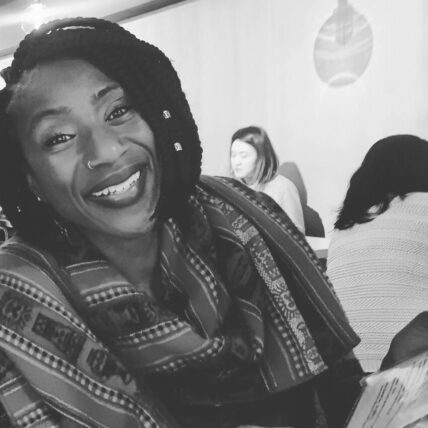
Trish Tchume is the Leadership Program Director for Community Change and comes with almost two decades of experience helping everyday people see their role in the gorgeous project of building a more just and equitable society.
Robin Katcher strengthens organizations, leaders, and networks on the front lines of social change. Her deep experience in social justice movements – as an organizer, educator, legislative advocate, and board member – informs her rigorous approach to building powerful organizations, leaders, and networks.

Natalie Bamdad joined Change Elemental in 2017. She supports Change Elemental consulting engagements through research, analysis, and project management. Her core areas of expertise include strategic planning and program design and implementation.

Natasha Winegar is a researcher, writer, communications specialist, and coach. She joined Change Elemental in 2013, and is our Research & Communications Manager. She collaborates on our consulting, coaching, and learning engagements, bringing a blend of curiosity, imagination, strategic insight, and a commitment to love, dignity, and justice.
Originally published at ChangeElemental.Org
Banner Photo Credit: Cuba Gallery | Flickr
by SUSAN MISRA, TRISH TCHUME, ROBIN KATCHER, NATALIE BAMDAD, NATASHA WINEGAR
Centering equity within networks
Collective Mind hosts regular Community Conversations with our global learning community. These sessions create space for network professionals to connect, share experiences, and cultivate solutions to common problems experienced by networks.

Our April 21, 2021, the Collective Mind Learning Community welcomed Ericka Stallings, Executive Director of Leadership Learning Community, to share her experiences, learnings, and challenges of working with networks to center and operationalize equity within their network practice. Leadership Learning Community is a national learning network that works to transform the way leadership development is understood, practiced, and evaluated in order to advance an equitable and just society, promoting leadership that is equity-based, networked, and collective. The session generated a conversation amongst participants around shared challenges, successes, and experiences based on their efforts to integrate equity within their networks.
Highlights from the conversation
The nature of network practice embodies the principle that a network’s strength is in its diversity. Finding equitable ways to harness that diversity is something most networks strive for. However, equity, both in definition and in practice, is as complex as networks themselves. As highlighted by our co-host’s presentation and through the community conversation, how networks choose to define equity, and how it is moved from concept, theory, and values to embodied and lived actions within a network can be dynamic, difficult, uncomfortable, rewarding, and necessary.
The conversation began with a definitionof equity, and an acknowledgment that it was only one of many ways to define equity. Part of that definition — “the guarantee of fair treatment, access, opportunity, and advancement while at the same time striving to identify and eliminate barriers that have prevented the full participation of some groups” — can, in part, be advanced through a network’s commitment to transparency and communication. However, as highlighted by our co-host’s experience, it should be done in a way that prioritizes people’s understanding and bi-directional communication, rather than overwhelming them with data, information, and updates. A perceived lack of transparency and communication by the network can damage trust and reduce participation, both of which are core to building an equity-centered network.
Another learning was the importance of centering and naming equity as a network value and goal and establishing a culture that centers equity. A network’s culture establishes values, norms, attitudes, and practices of the individuals’ and groups’ behaviors that influence their interactions. It maintains the network’s shared purpose and fosters ongoing collaboration, enabling these constructive dynamics and spaces and ensuring they are embodied in all network undertakings. A network culture centered on equity means shifting the network’s norms and dynamics to support and enable equity across its activities and then also asking if the outcomes achieved are in line with the values that were articulated.
Taking steps to move equity from something that is spoken to something that is operationalized can be uncomfortable, messy, and disruptive. However, much like the overall work of a network manager, it’s important to work with the discomfort, rather than against it. The process of operationalizing equity requires investing in relationships, deep listening, innovation, and experimentation. For example, participants described ways in which they had experimented with how to deepen network engagement such as holding space for formal and informal listening sessions, conducting surveys, creating affinity groups, incorporating consent-based decision-making, and integrating trust-based models. Core to this all is for the network to be willing to go through the process of experimentation and learning. In some cases, efforts may be met with failure, and in others, success. However, the ability of a network to create the space and invest in the efforts will ultimately foster trust in its network relationships, which is critical to its productivity and impact. Trust increases participation and collaboration, and it is only through collaboration that the network is able to achieve something greater than the sum of the parts.
How to authentically and meaningfully operationalize equity within a network parallels many aspects of what it means to be an effective network manager. It may look different for each network depending on its goals, breadth of diversity and composition, its mission, and many other factors. Networks, and a network’s culture, are dynamic, shifting constantly in the face of external and internal changes. Just as network managers and leaders must often accustom themselves to messiness, working with it instead of against it, operationalizing equity means disrupting and deconstructing systems and being open to conflict and discomfort. Having clear values and goals at the outset, and constantly questioning, learning, and assessing can help determine if and how a network’s efforts are progressing and if they are creating disruptive opportunities to increase equity. As mentioned by our co-host, if you’re feeling too comfortable, it may mean something has been missed.
Miss the session? View the recording here.
Thanks again to our co-host, Ericka Stallings from Leadership Learning Community!
Get involved
Have your own experiences with efforts to center equity in network practice? Tell us about it in the comments below.
Join us for the next Community Conversation!
Or email Seema at seema@collectivemindglobal.org to co-host an upcoming session with us. Learn more about co-hosting here.
Collective Mind seeks to build the efficiency, effectiveness, and impact of networks and the people who work for and with them. We believe that the way to solve the world’s most complex problems is through collective action – and that networks, in the ways that they organize people and organizations around a shared purpose, are the fit-for-purpose organizational model to harness resources, views, strengths, and assets to achieve that shared purpose.
Originally published HERE
PLEASE DONATE to help Network Weaver continue in it’s mission to offer free support and resources to networks worldwide.
SYSTEMS CHANGE & DEEP EQUITY
PATHWAYS TOWARD SUSTAINABLE
IMPACT, BEYOND “EUREKA!,”
UNAWARENESS & UNWITTING HARM
An Interview with Sheryl Petty and Mark Leach
Below is the introduction to the full Systems Change & Deep Equity monograph offered by Sheryl Petty of Movement Tapestries and Mark Leach of Change Elemental.
Available for download here at Network Weaver or directly from Change Elemental’s Website.
Change Elemental chose to offer a monograph to share our thoughts on the inseparability of Systems Change and Deep Equity, given our 40 years as an organization in the systems change, capacity building, and social justice fields. (1) We offer this especially given the proliferation of equity awareness and significantly deeper requests for equity support across the organizational development and movement network fields in the last few years. This expansion in requests for deep, transformational equity support has grown dramatically since the 2016 U.S. presidential election. Now, many more social change organizations and philanthropic institutions are working to deepen their knowledge and capacity around Systems Change and Deep Equity. In our opinion, the combination of these two fields is pivotal and likely the work to do for the next phase of our human evolution if we are to become the societies we hope for in our deepest hearts and visions for just and healthy communities.
The co-authors of this article have 65 years of combined experience in systems change, equity, and organizational transformation. We have worked together on a number of projects for nearly 8 years, sometimes separately and, at times, together in local, national, and international spaces. We have worked across foundations, non-profits, medium-to-large school systems and universities as well as with individuals, institutions, and networks to support leaders, change agents, and groups to deepen their capacity to realize the full potential of their missions and collective dreams. We have observed over the last decade or so in the field of organizational development, the more popular advent of “Systems Change” as a domain of effort that can lead to more comprehensive, lasting, and effective transformation for institutions, communities, neighborhoods, and groups.
Yet, our observation is also that these approaches to “complex systems” are new to some and not so new to others. Here enters “equity.” We have written elsewhere on the dimensions of equity, and refer readers to those pieces. (2) Others of our colleagues have also written extensively across the fields of social justice, organizational transformation, network development, and movement building. (3)
Our purpose in this article is to dispel mythology and to illuminate essential dimensions of approaches to Systems Change intimately connected with Deep Equity. Our perspectives and our experience have shown us that the two are inseparable if they are to be pursued at depth. The degree of healing needed in our world, and in our collective institutions and communities, requires nothing less than depth from us at this time (if less comprehensive approaches were ever appropriate).
We indicate in this monograph what, from our perspective, are the most salient aspects of approaches to Systems Change and Deep Equity combined that can lead and, in our experience, have led to the most profound changes in organizations, local, national, and global communities, networks, and movement building efforts. (We also refer readers to Change Elemental and Building Movement Project’s 2018 webinar on Systems Change and Equity for further grounding in our approaches. (4) )
As we have stated, nothing less than the robustness of complex Systems Change approaches are necessary to solve some of the most intractable situations we are and have been facing for quite some time—socially, environmentally, and economically, in terms of the overall health and well-being of individuals and communities, nationally and globally. We have grown as a species in our ability to be aware of the interconnectedness between so many of our issues and circumstances; this insight is a gift. We are now challenged to take that growth and insight, and apply it at depth with particular attention to our areas of unawareness—i.e., the places we have been ignoring for centuries. It is to these areas that Deep Equity speaks. In fact, Deep Equity, by its very nature, is complex Systems Change.
To put a finer point on these statements: Systems Change pursued without Deep Equity is, in our experience, dangerous and can cause harm, and in fact leaves some of the critical elements of systems unchanged. And “equity” pursued without “Systems Change” is not “deep” nor comprehensive at the level of effectiveness currently needed.
Both need each other. The challenge in effectively combining these domains of practice is that often many systems change actors—particularly those with access to publishing, funding, and other critical resources to achieve depth and scale—do not seem to understand nor are they embedding Deep Equity into their work. Or when “equity” is addressed, it is piecemeal, seems an afterthought, and/or is shallow. Actors pursuing and advancing critically needed systems change efforts often bring limited awareness to address or adequately embed equity. This is the wound we must heal.
We have observed too many times systems change efforts pursued to the neglect of equity, or Deep Equity, despite living in a period where information about equity (and Deep Equity, in particular) is proliferating at an unprecedented rate. Gone are the times when any of us could say, “I couldn’t find any information on it,” “I didn’t know anyone,” or “I didn’t know better.”
We owe it to ourselves and to each other to confront our old habits that are preventing us from creating the most robust, healing, catalytic, life-affirming, and transformative solutions we can develop, and that are desperately needed. Pursuing Deep Equity and Systems Change will require us to squarely address issues of power, privilege, places of unawareness, and the meaning of “depth” in approaches to equity and systems change. It will take bravery and courage, finding out how deep we are really willing to go to help heal and transform this world, committing to the depth that we discover in our exploration, and partnering and complementing each other in ways that may be heretofore unprecedented. (5) (We also refer the reader to a previously published piece from one of the authors on the relationship between these two themes plus “inner work:” “Waking Up To All of Ourselves: Inner Work, Social Justice & Systems Change.” (6) )
This monograph is structured as an interview of Sheryl Petty conducted by Mark Leach, but it is ultimately a dialogue between two long-term Systems Change and Equity actors.
One of us is a soon-to-be middle-aged cisgendered, (7) queer/pansexual, Black woman from Detroit, whose professional career in social justice and Systems Change began in Oakland, CA in educational systems and nonprofits, and branched out into capacity building and systems change with school systems, nonprofits, and philanthropic institutions around the country over the last 25 years. She also has a nearly 25-year inner work practice in African-based and Tibetan Buddhist traditions, in both of which she is ordained and teaches.
The other of us is a well-past middle-aged, cisgendered, white man from Long Island, New York. Based on early experiences in some of the world’s most economically poor countries, he has spent his life trying to understand who gets what, and why, and working with people, organizations, and networks across big differences in identity, wealth, and worldview to tackle big, messy problems of systemic inequity.
Systems Change & Deep Equity is available for download here at Network Weaver or directly from Change Elemental’s Website.
1. Change Elemental was formerly known as Management Assistance Group (MAG). We changed our name in April 2019.
2. For example: Petty, Sheryl. Seeing, Reckoning and Acting: A Practice Toward Deep Equity. Change Elemental, 2016. https://changeelemental.org/resources/seeing-reckoning-acting-a-practice-toward-deep-equity/ ; and Petty, Sheryl and Amy B. Dean. Pursuing Deep Equity. Nonprofit Quarterly, 2017. https://nonprofitquarterly.org/five-elements-of-a-thriving-justice-ecosystem-pursuing-deep-equity/
3. Please see more resources listed in the appendix.
4. Systems Change with an Equity Lens: Community Interventions that Shift Power and Center Race. Change Elemental and Building Movement Project, 2018. https://changeelemental.org/resources/systems-change-with-an-equity-lens-community-interventions-that-shift-power-and-center-race/
5. Petty, Sheryl. “Introduction.” Equity-Centered Capacity Building: Essential Approaches for Excellence and Sustainable School System Transformation. Equity-Centered Capacity Building Network (ECCBN), 2016. https://capacitybuildingnetwork.org/intro/
6. Petty, Sheryl. “Waking Up All Of Ourselves: Inner Work, Social Justice, & Systems Change.” Initiative for Contemplation, Equity, and Action Journal. Vol. 1, No. 1, pages 1-14, 2017. http://www.contemplativemind.org/files/ICEA_vol1_2017.pdf
7. Cisgender is a term used to describe people who identify with the gender assigned them at birth. Source: Words Matter: Gender Justice Toolkit. National Black Justice Coalition. https://www.arcusfoundation.
Featured Photo by Jaccob McKay on Unsplash

